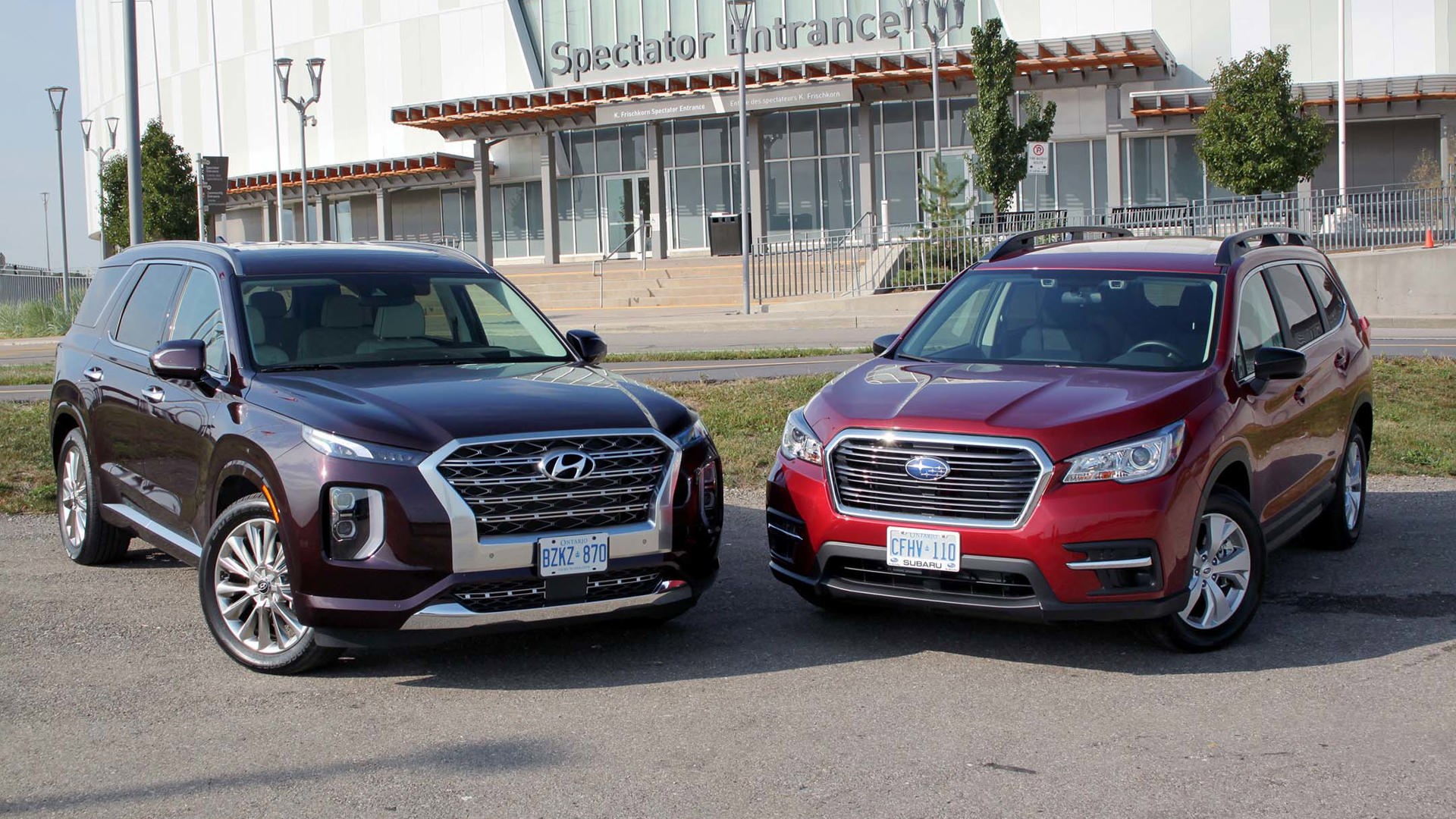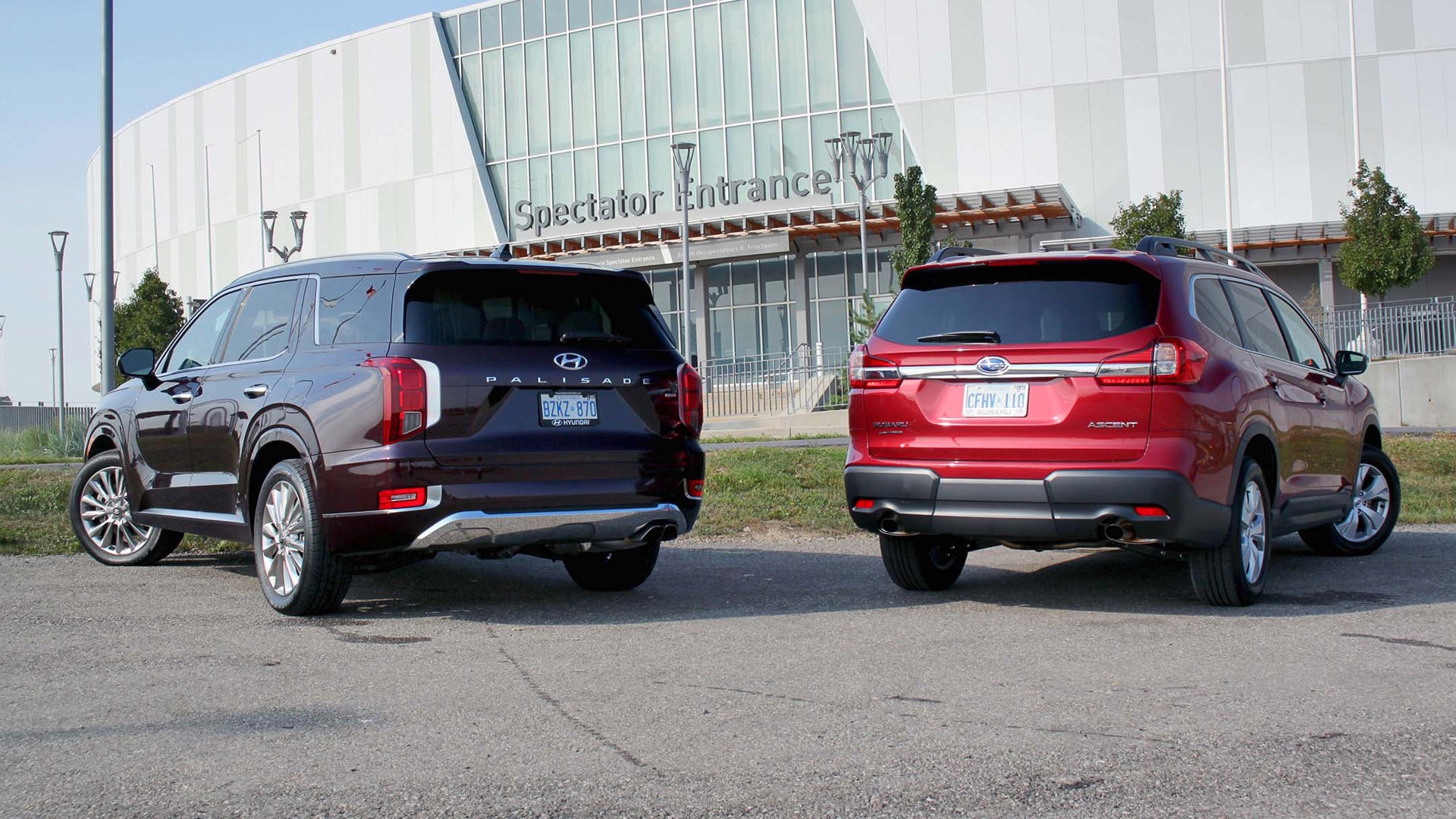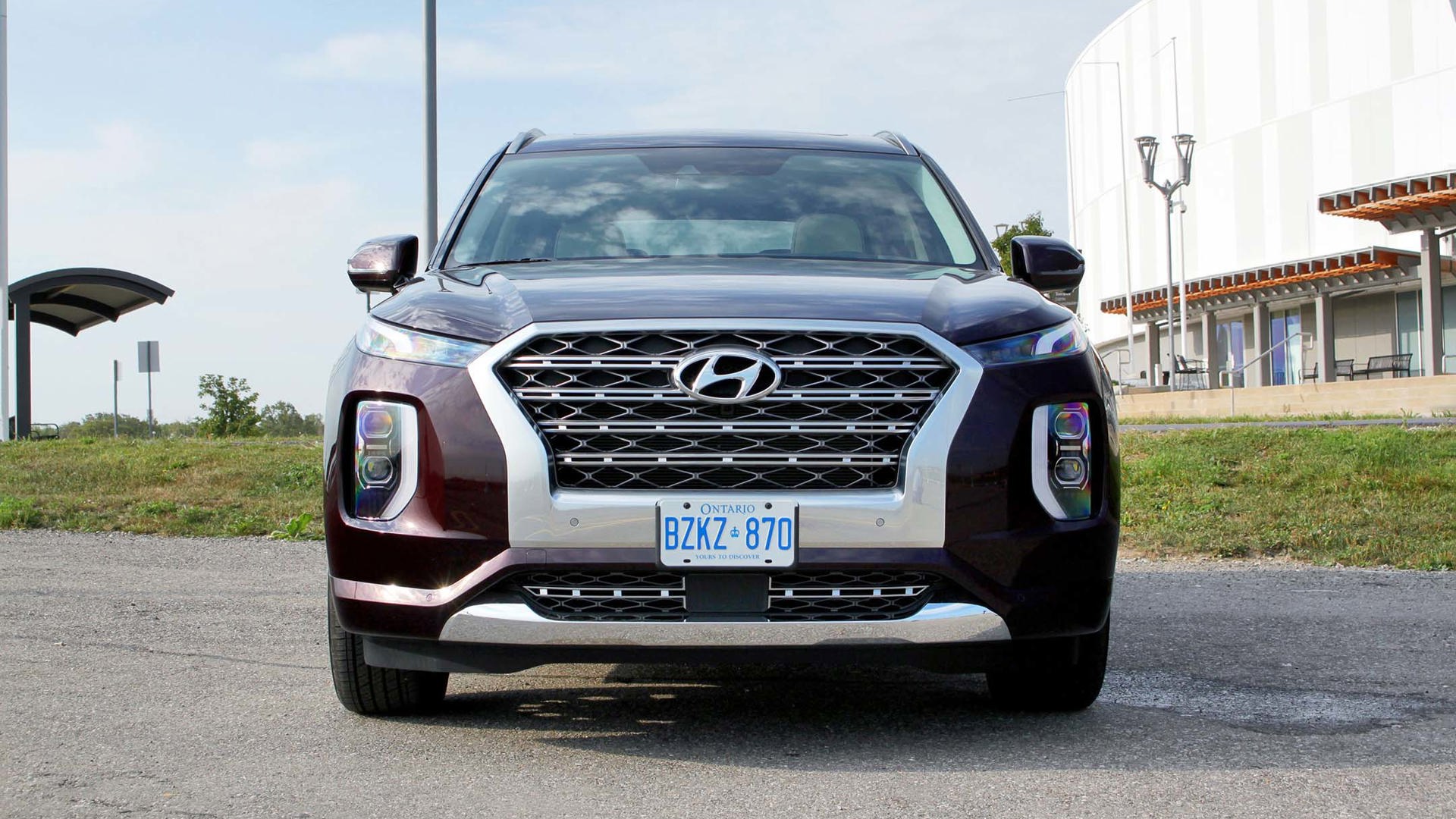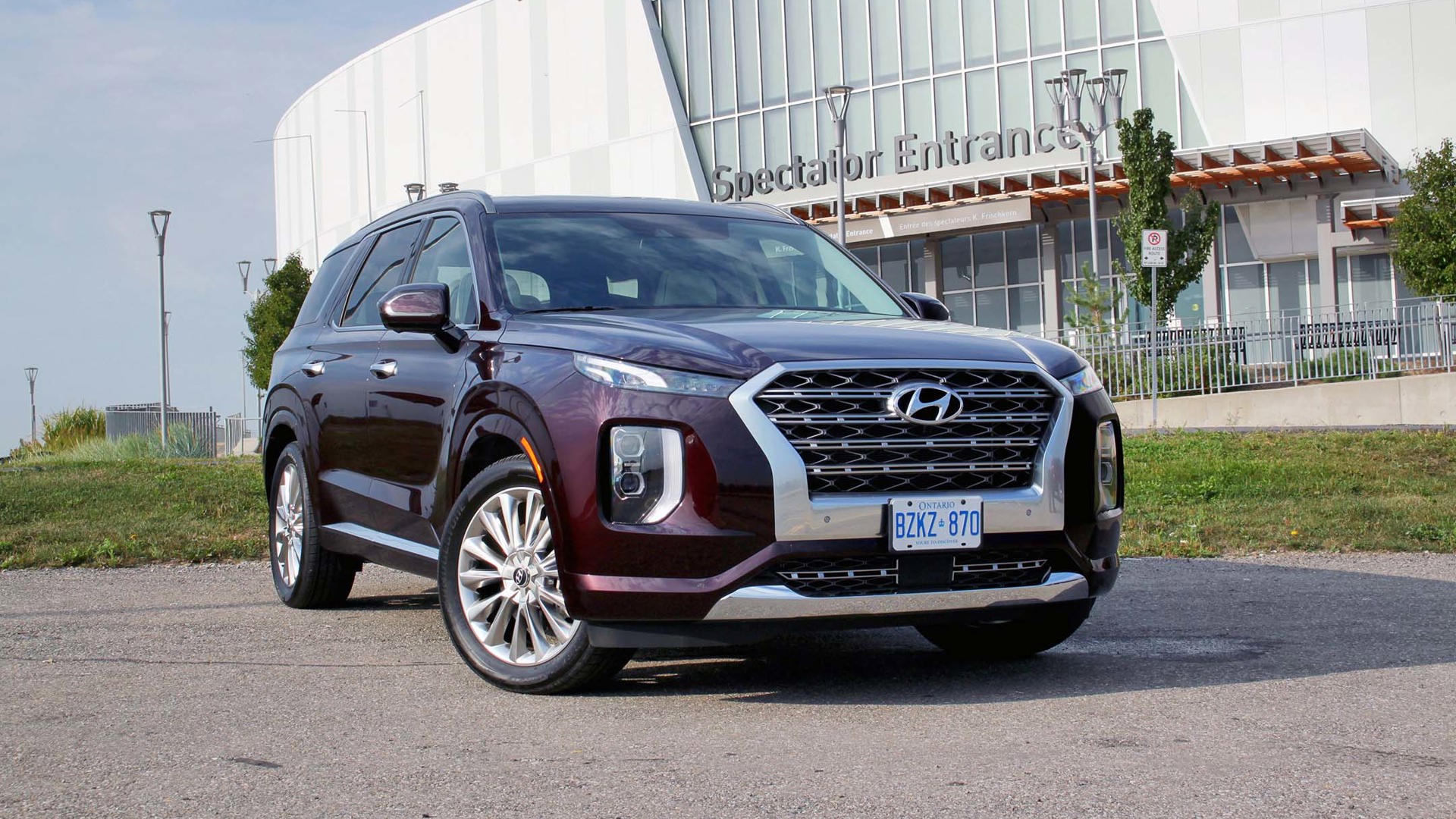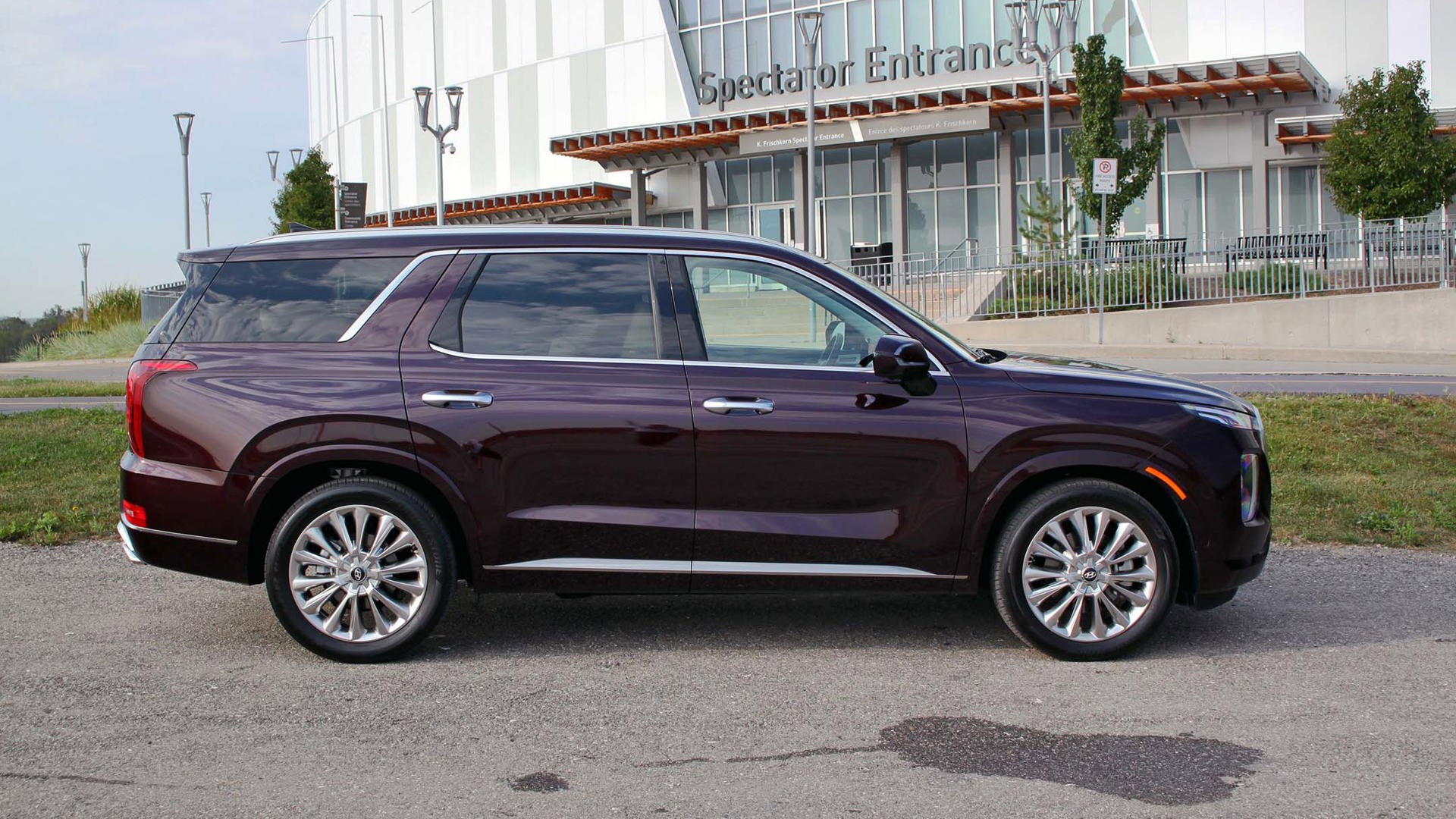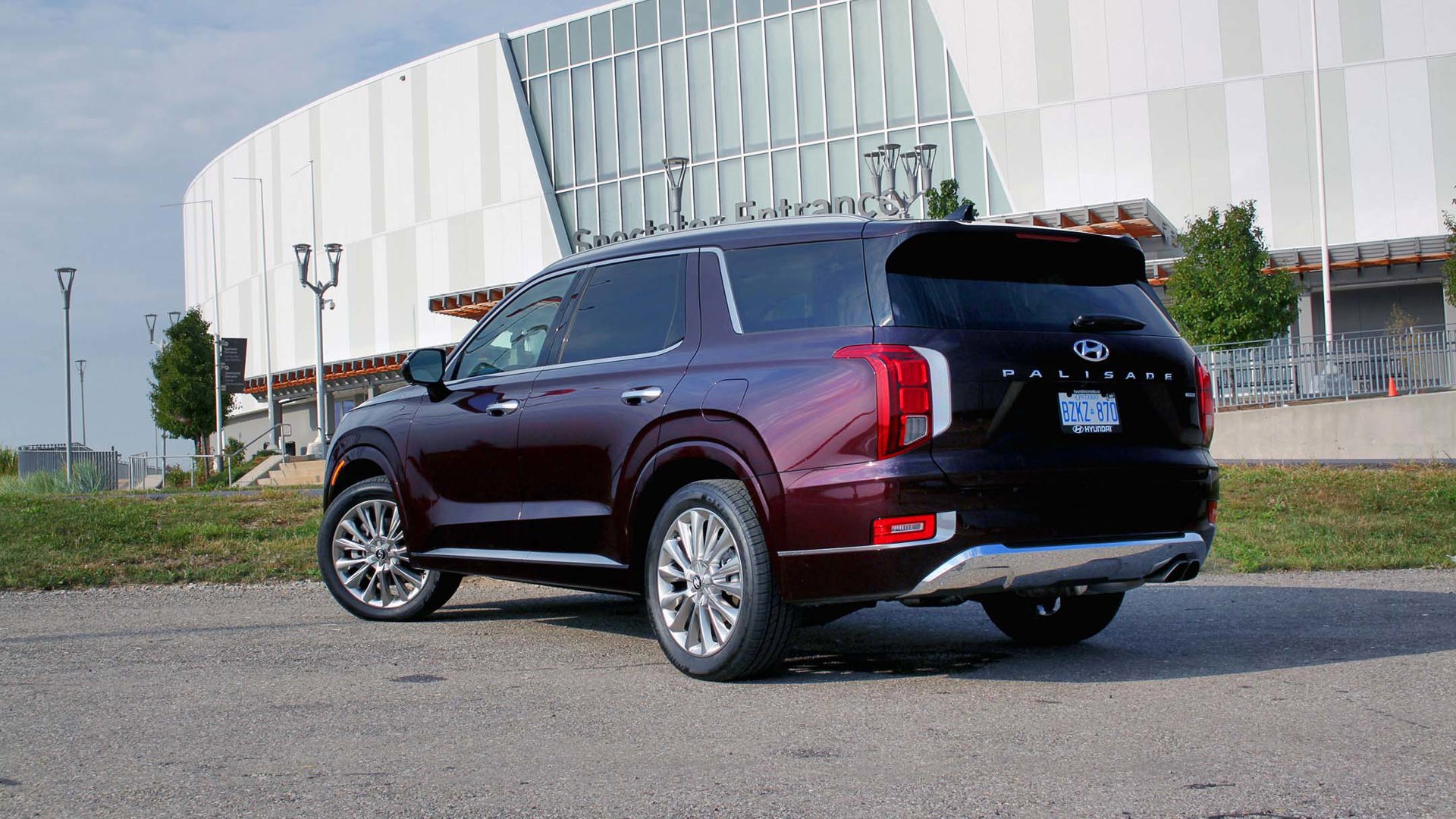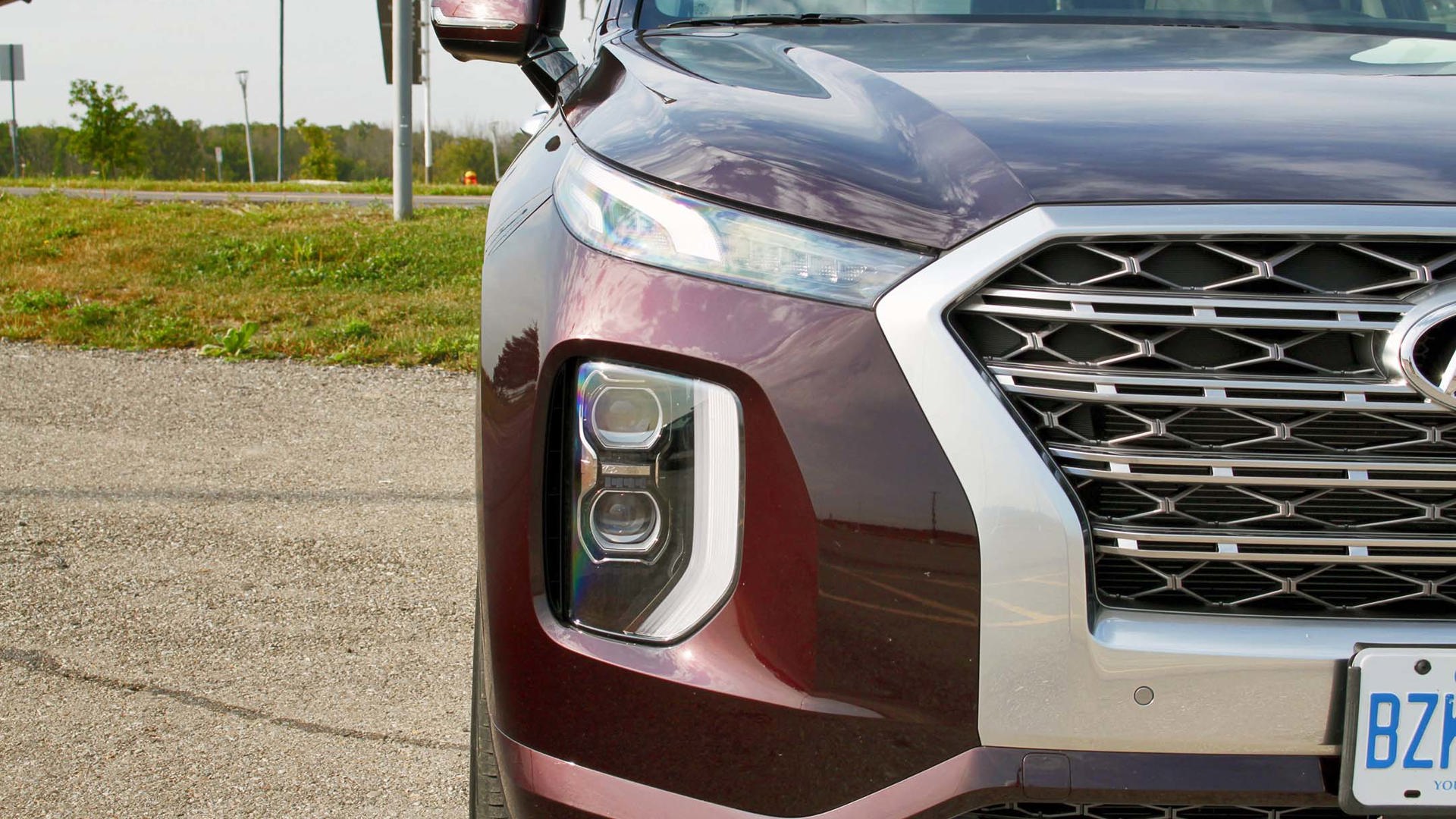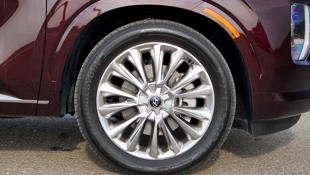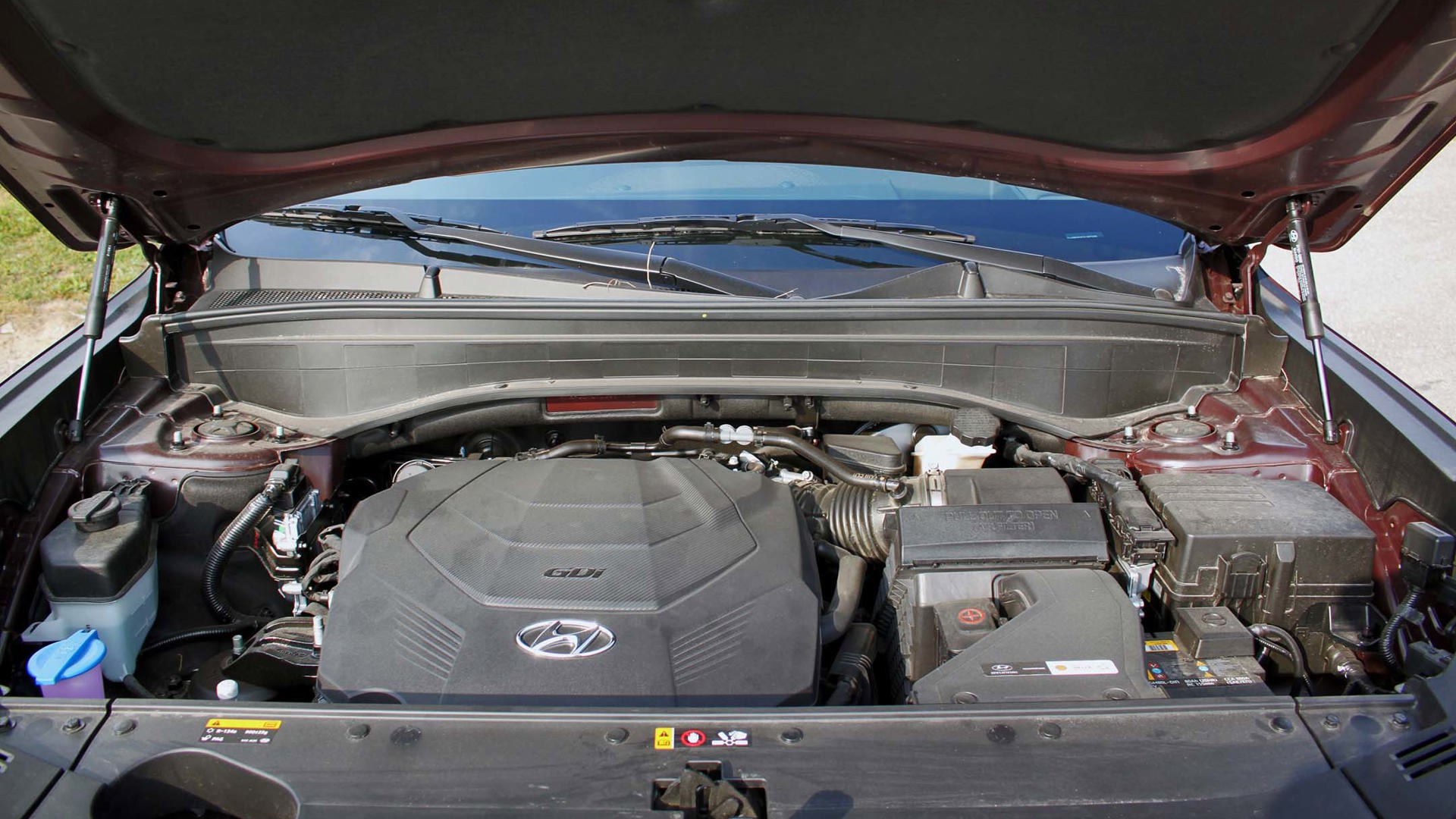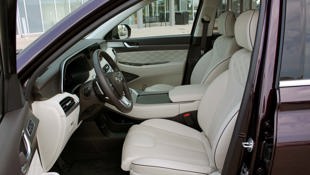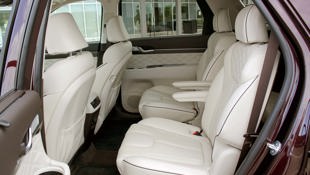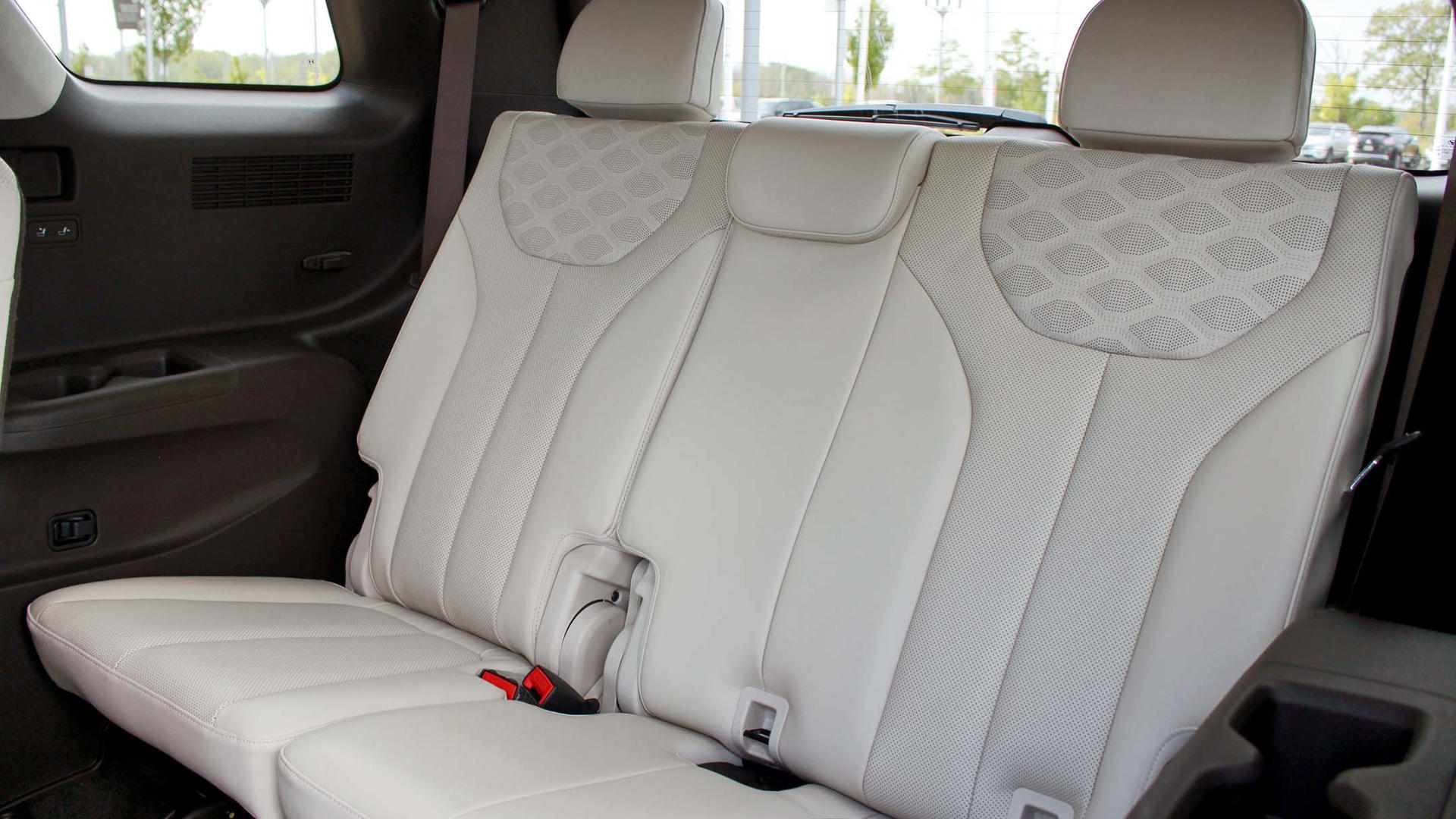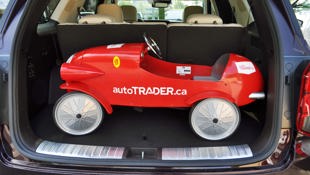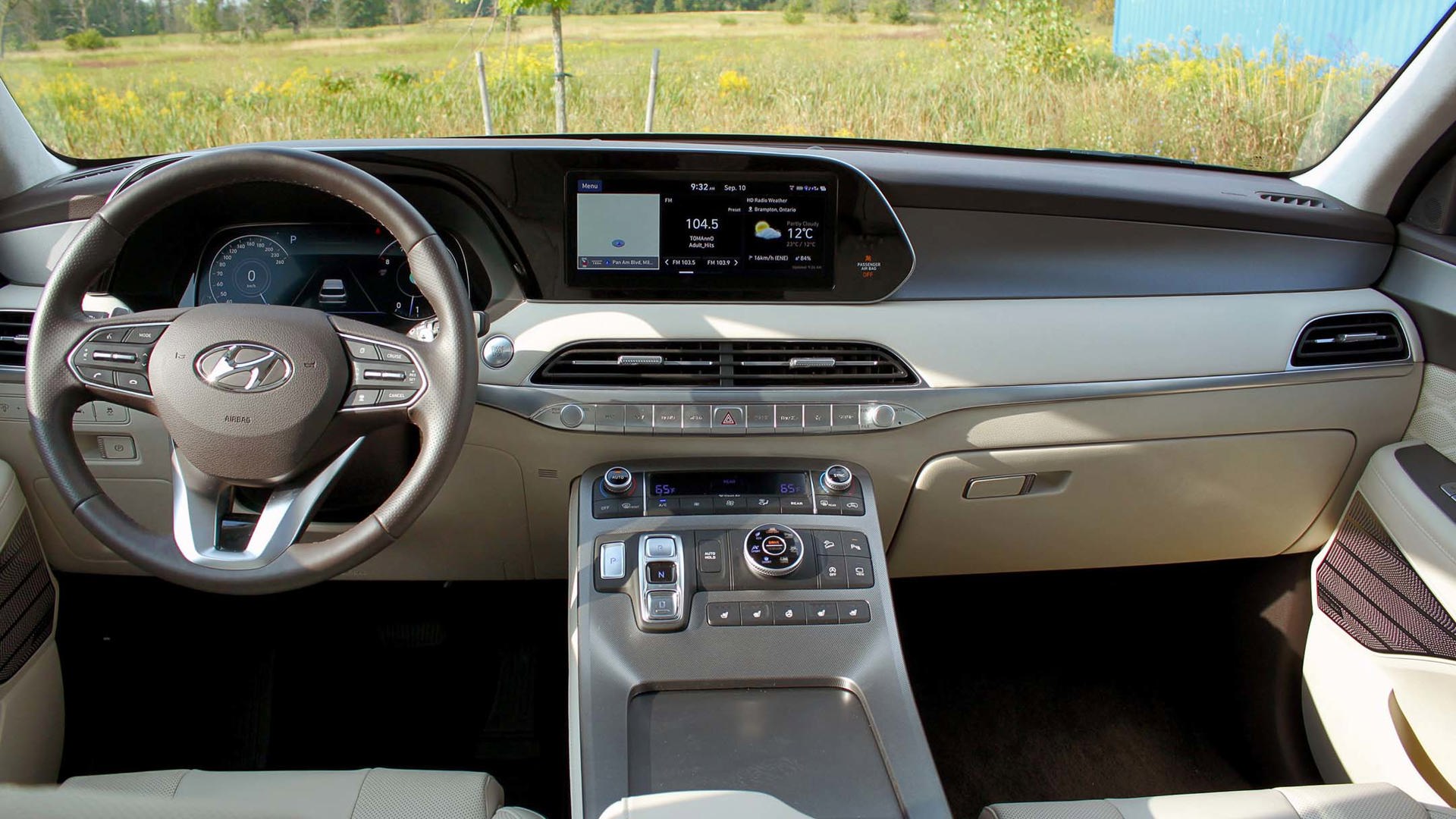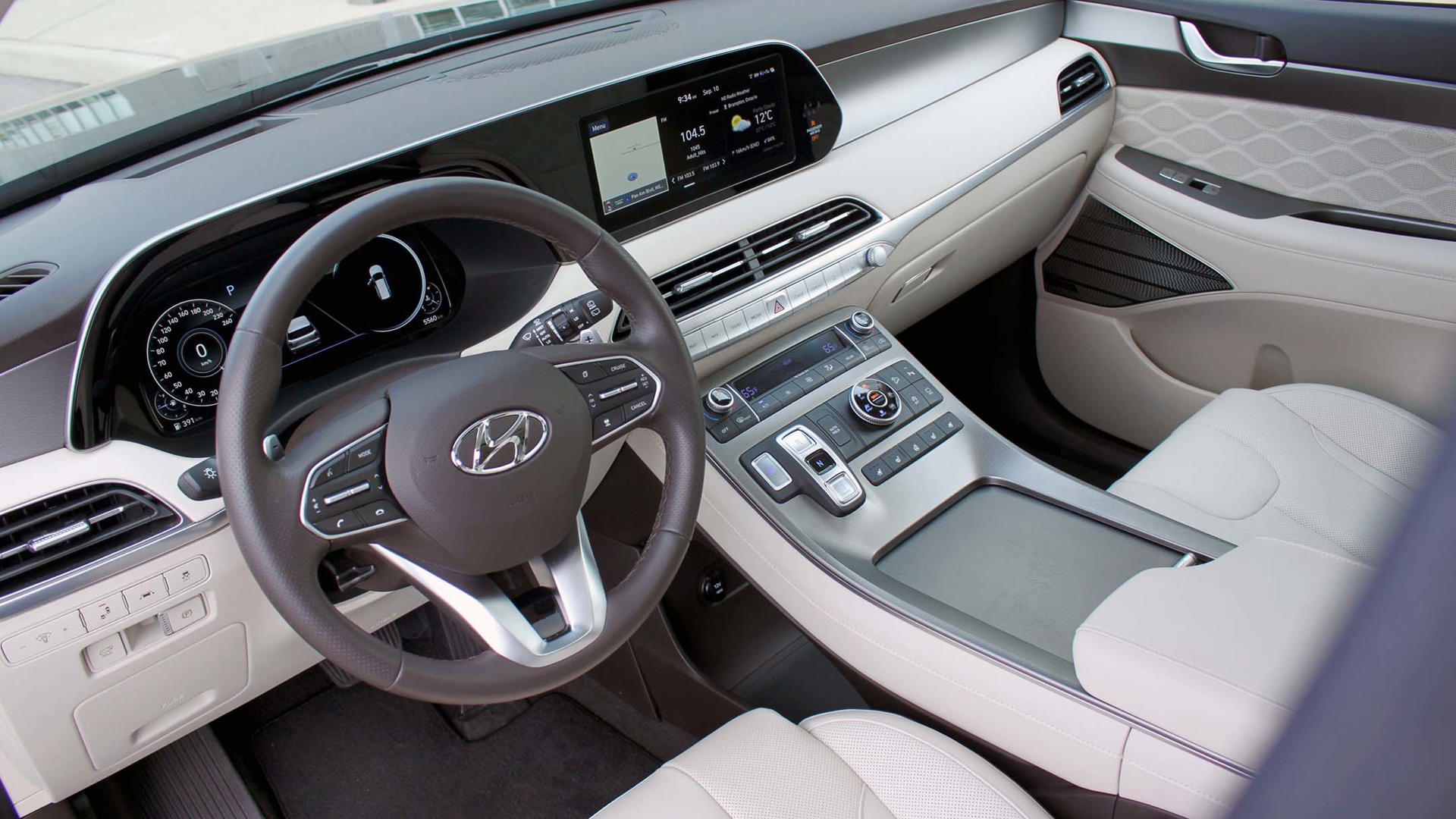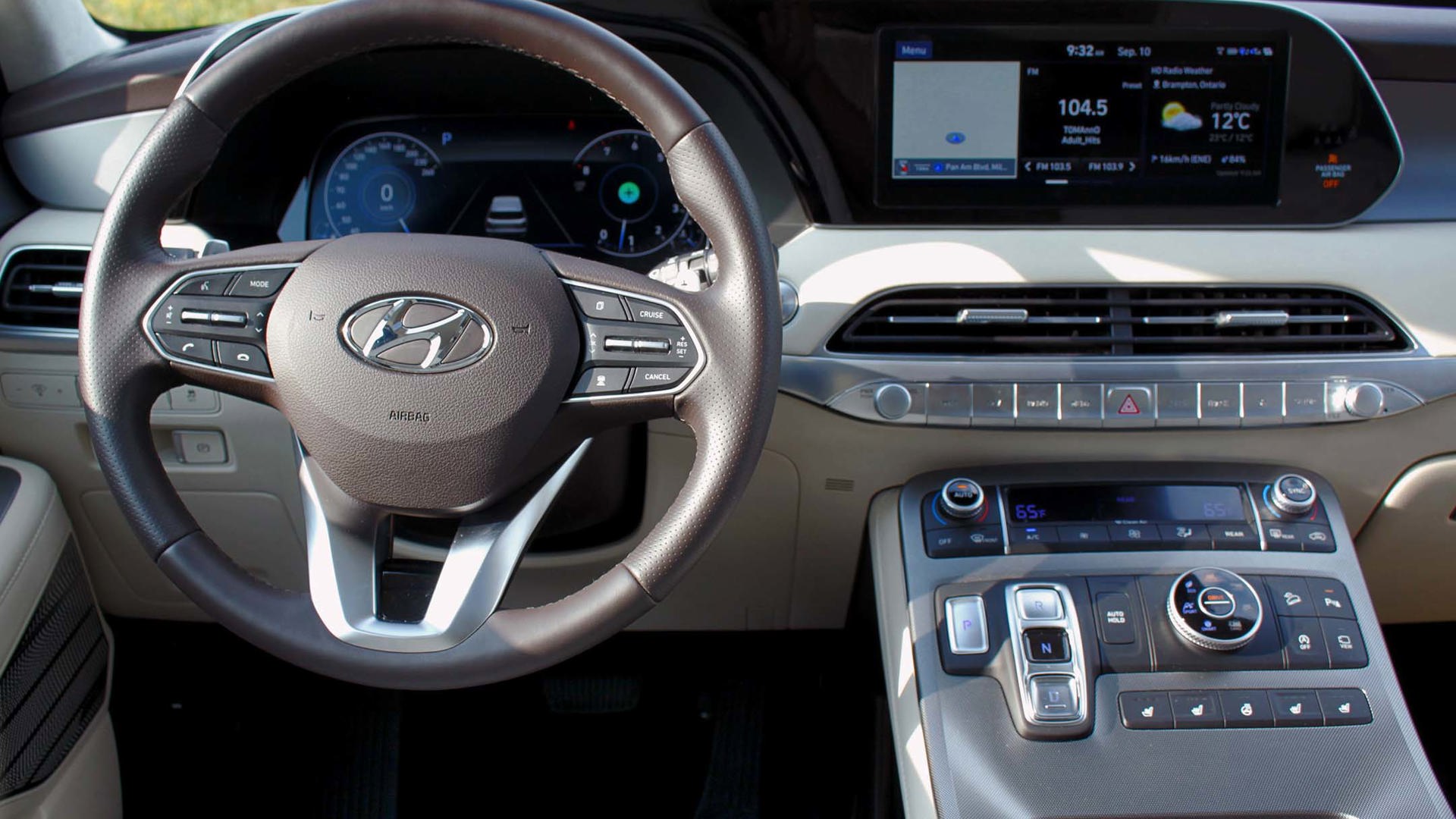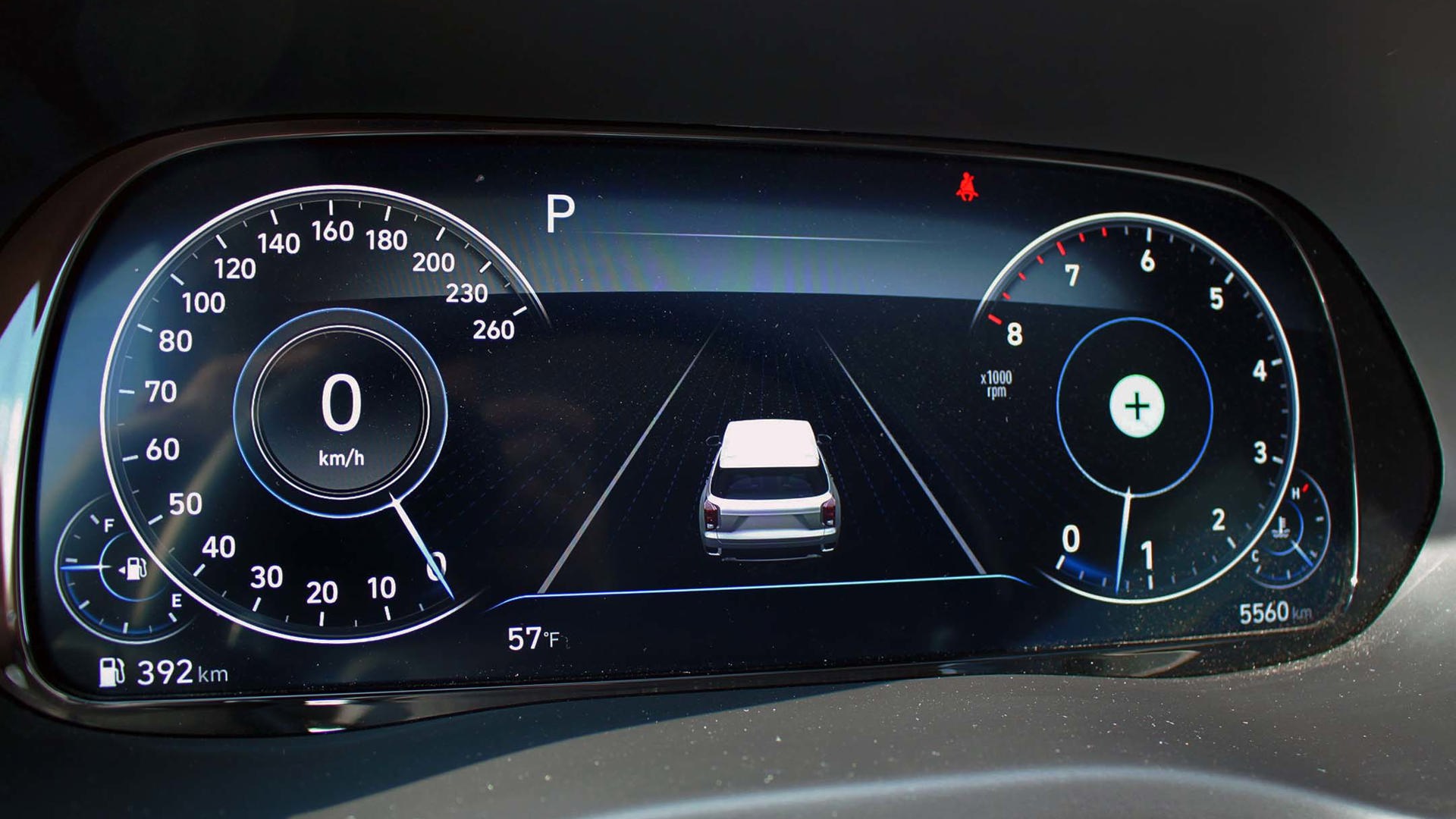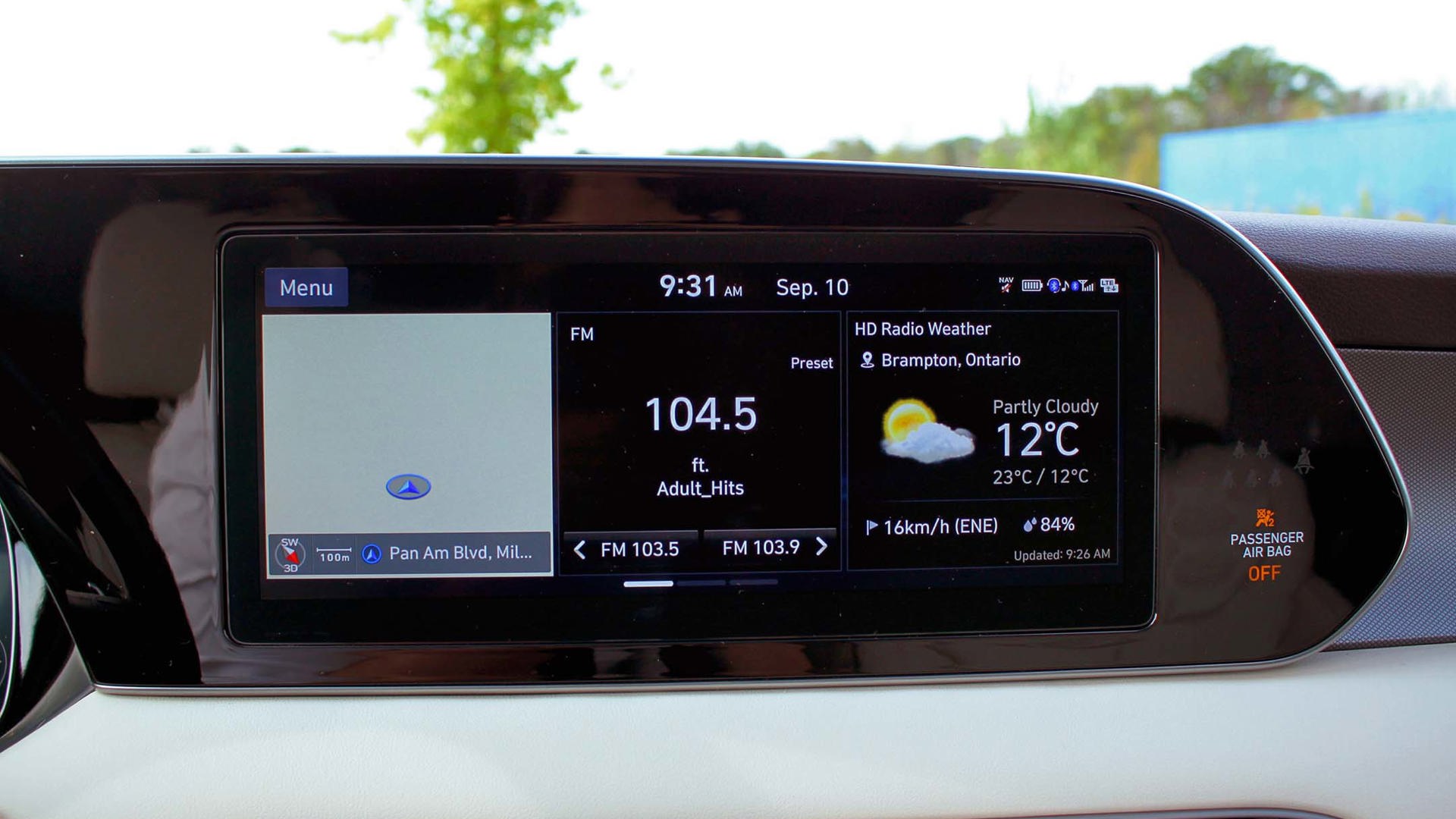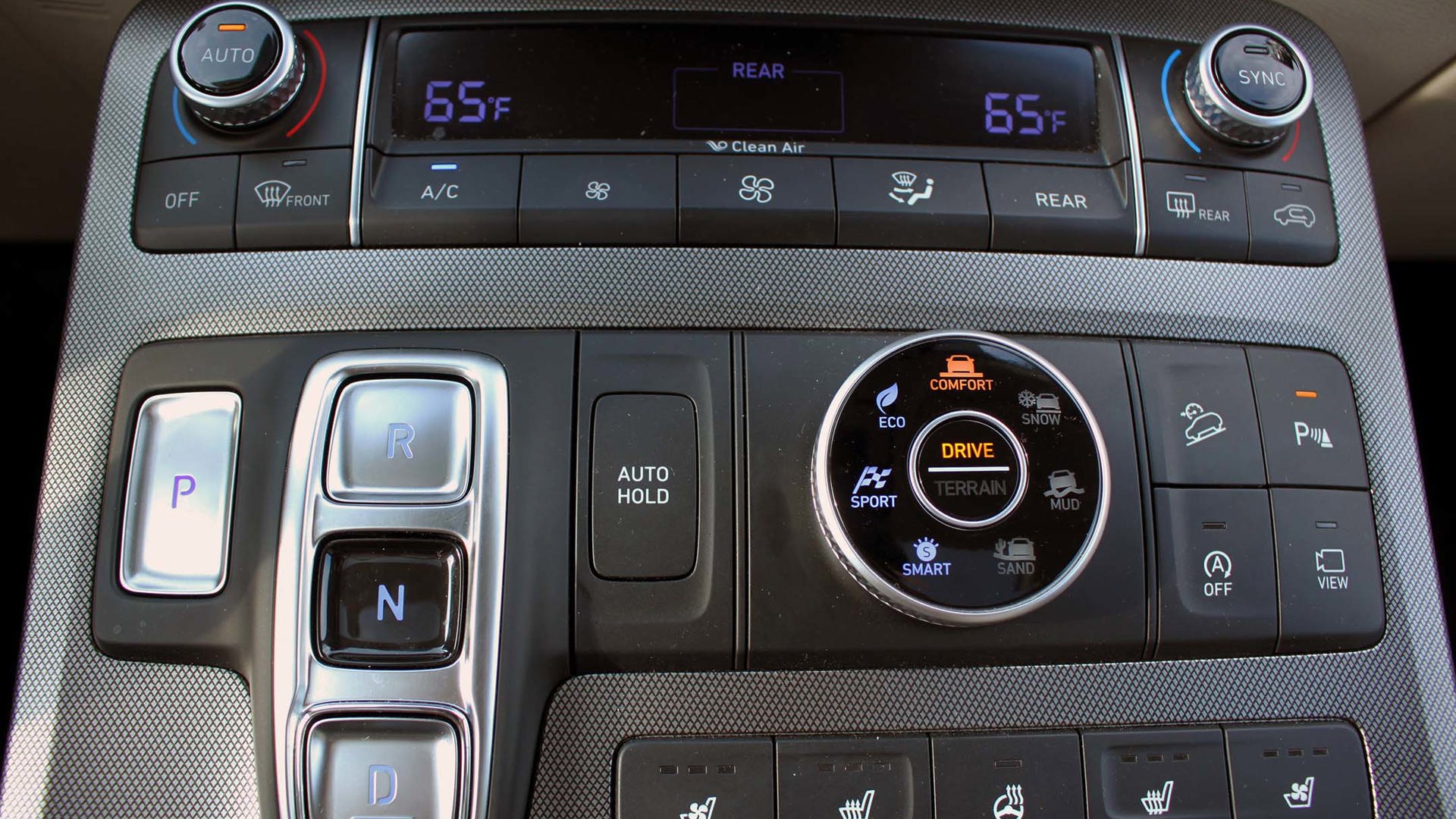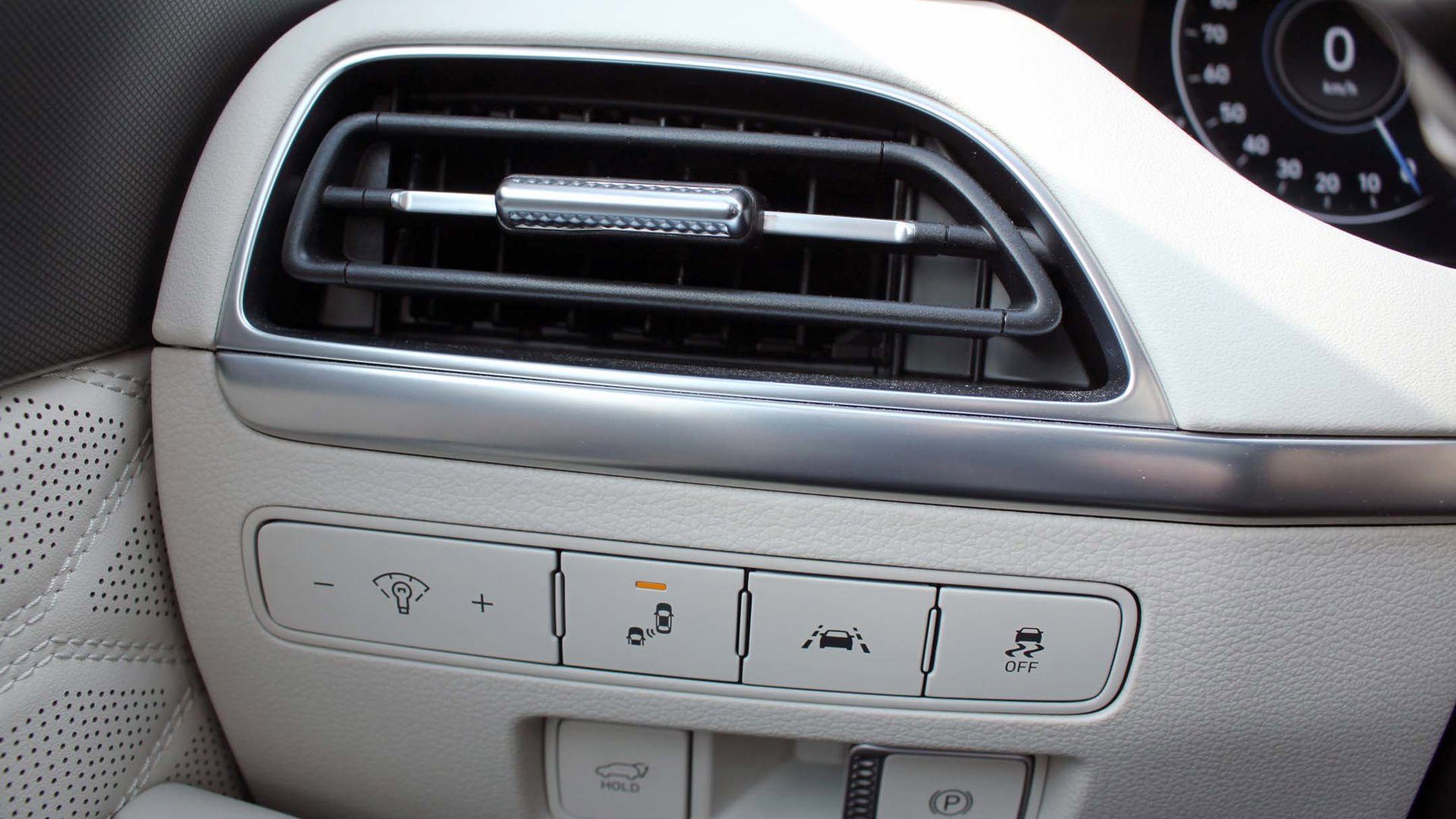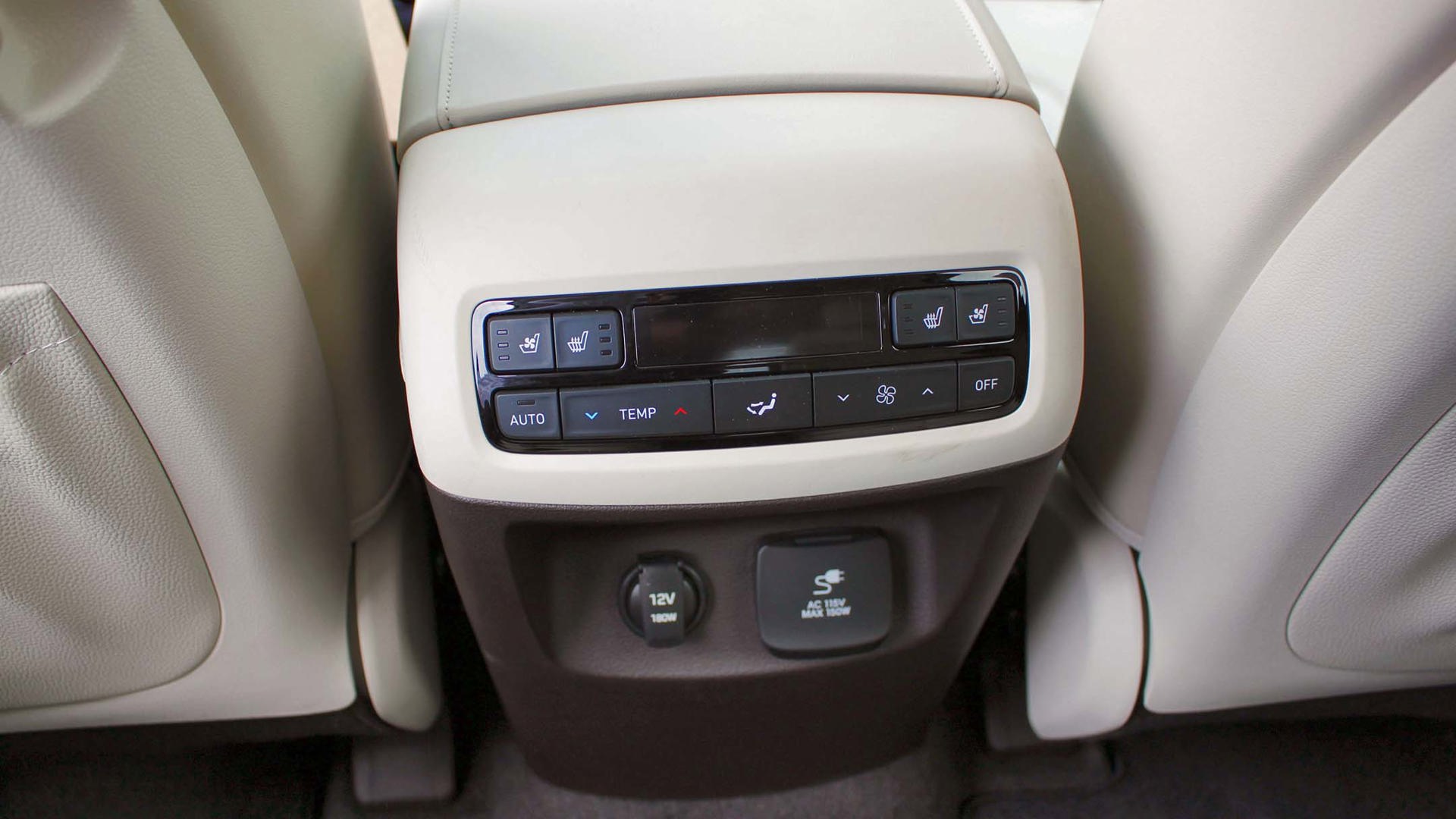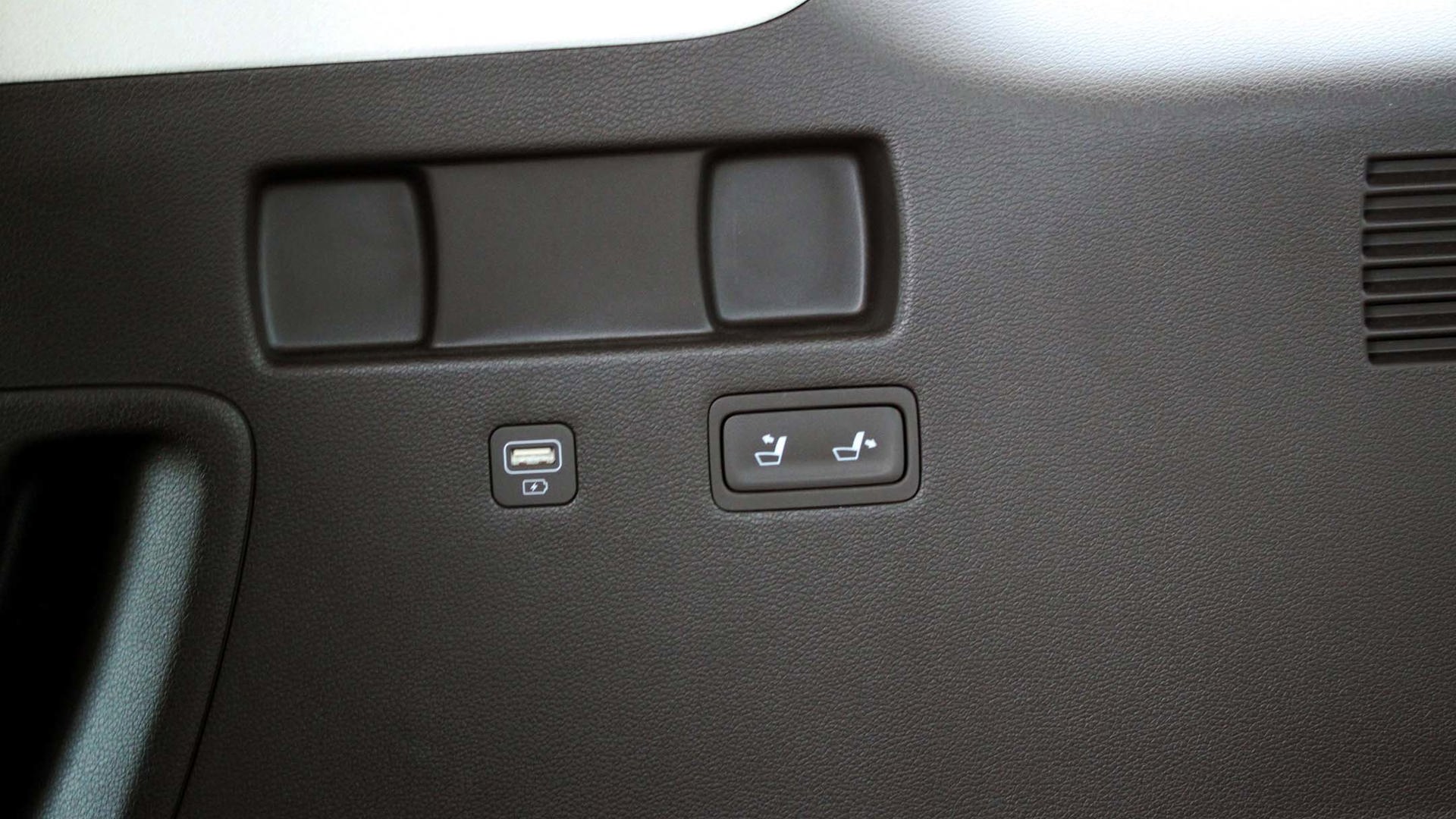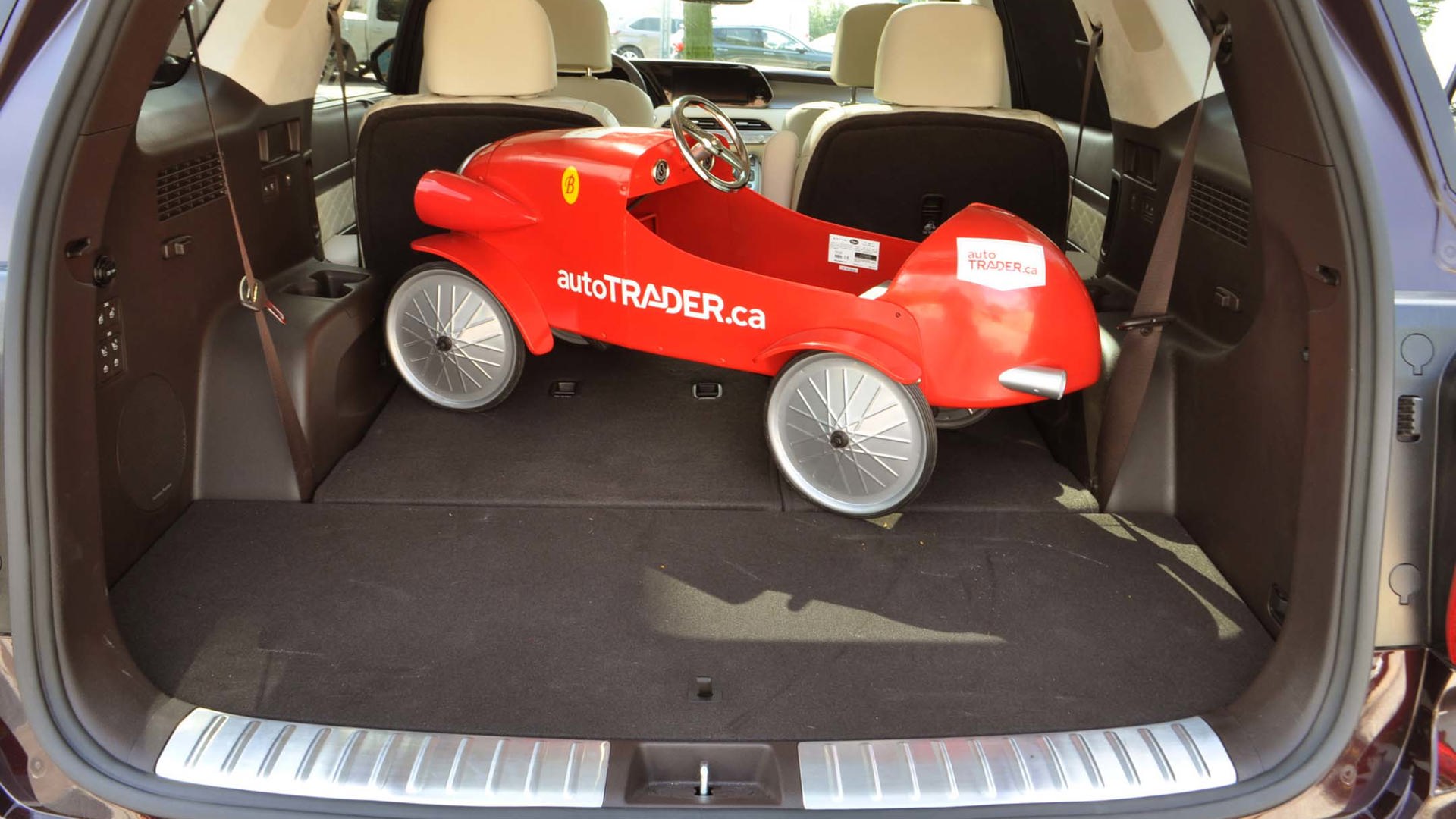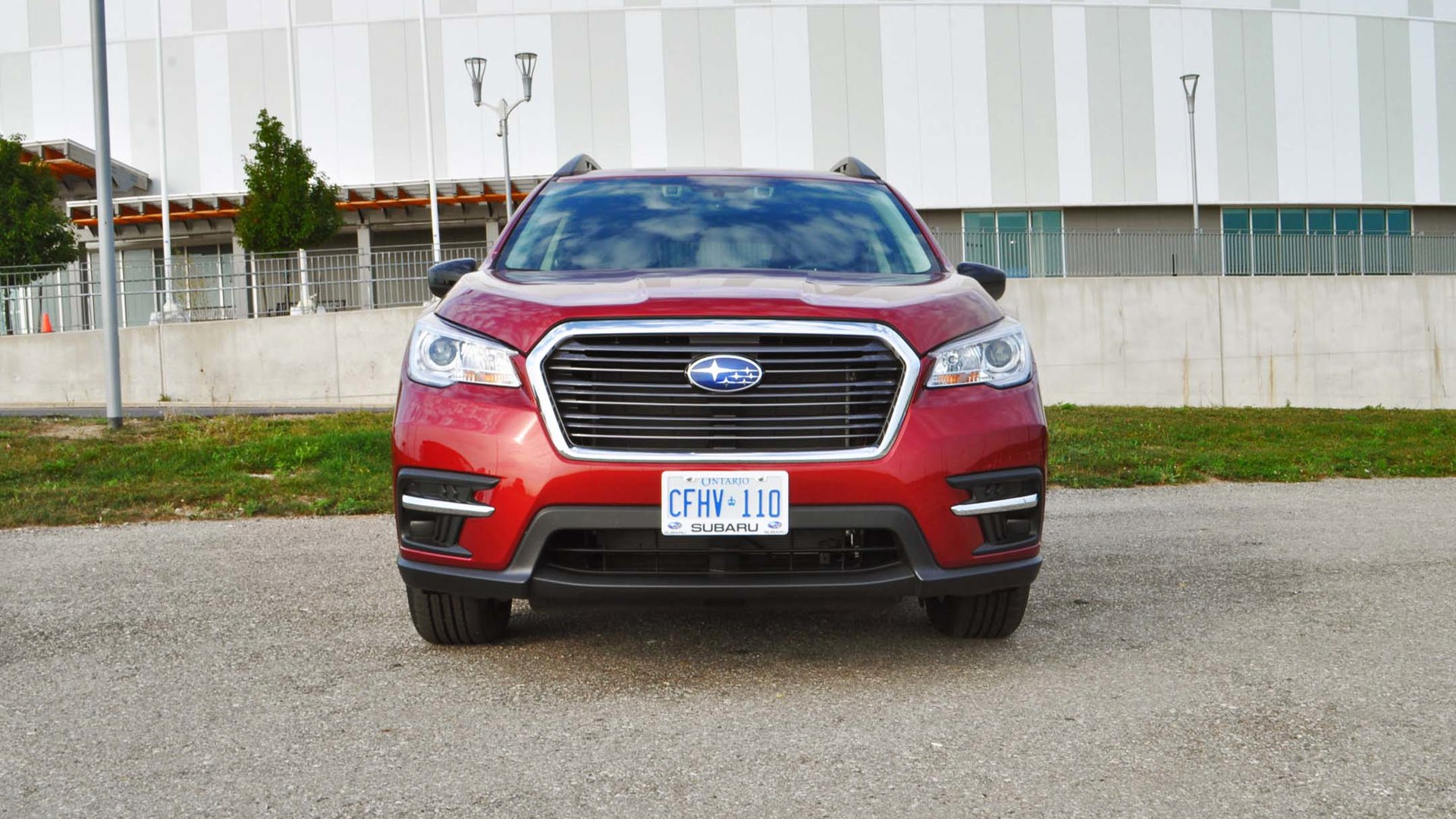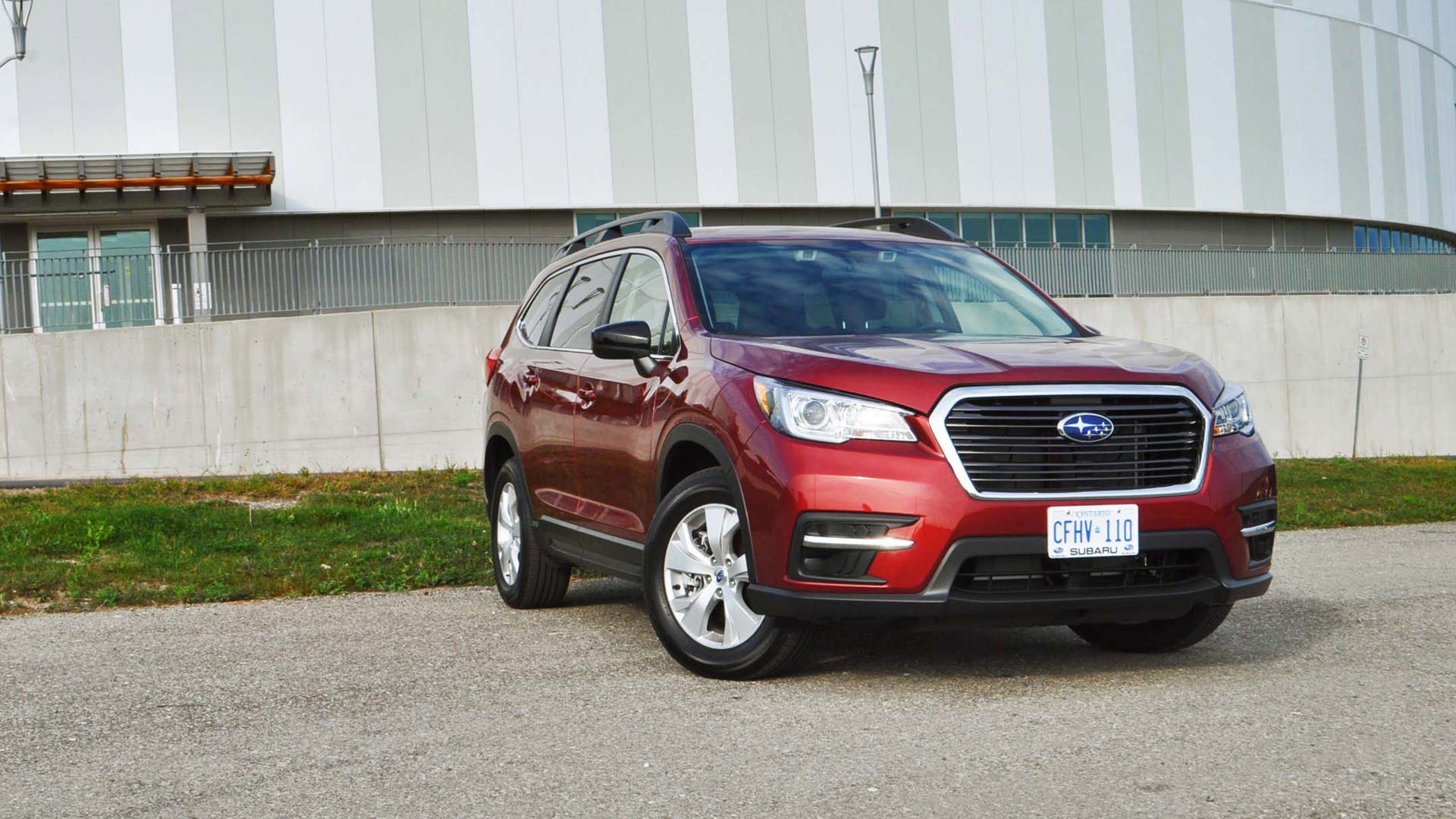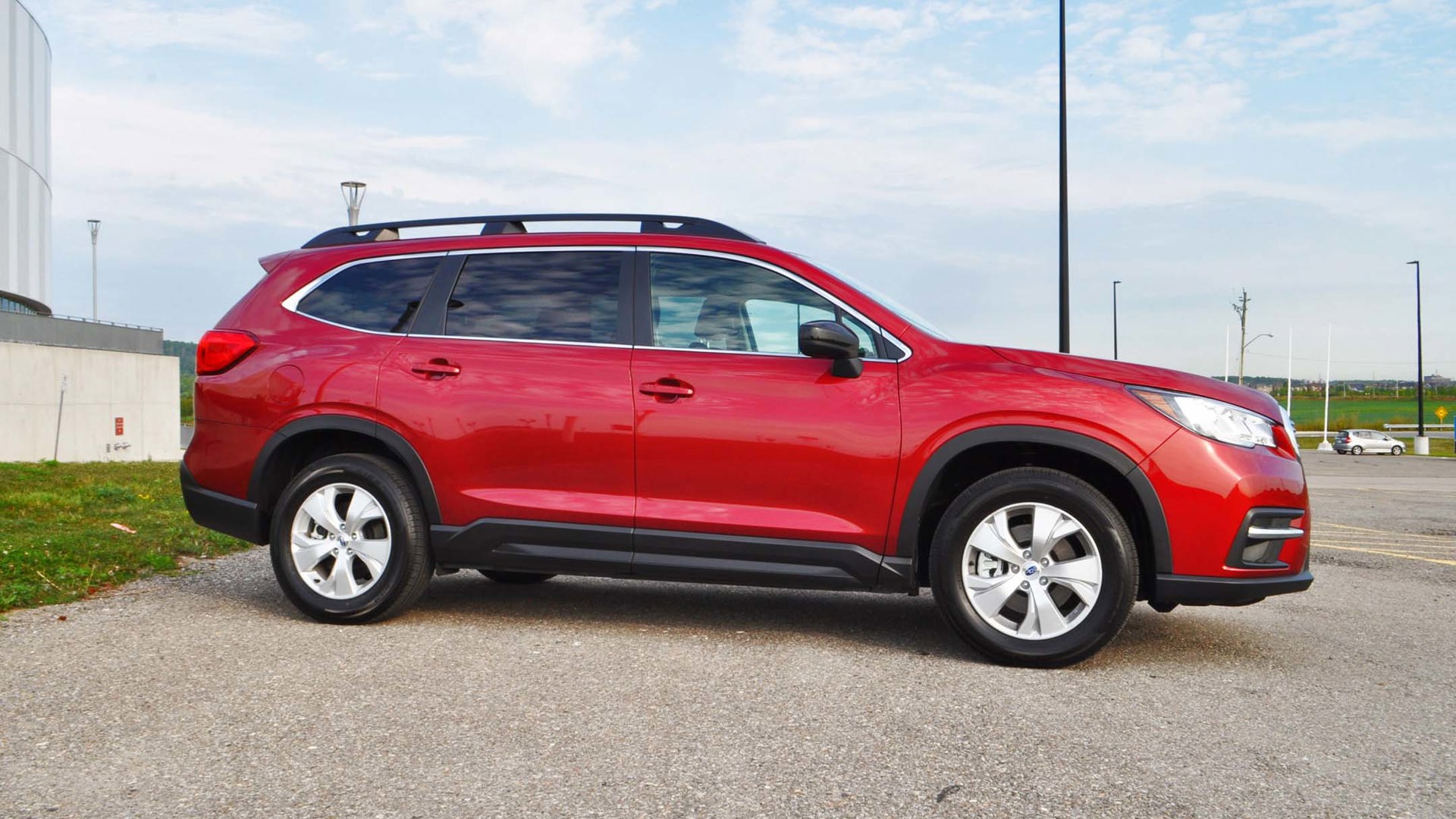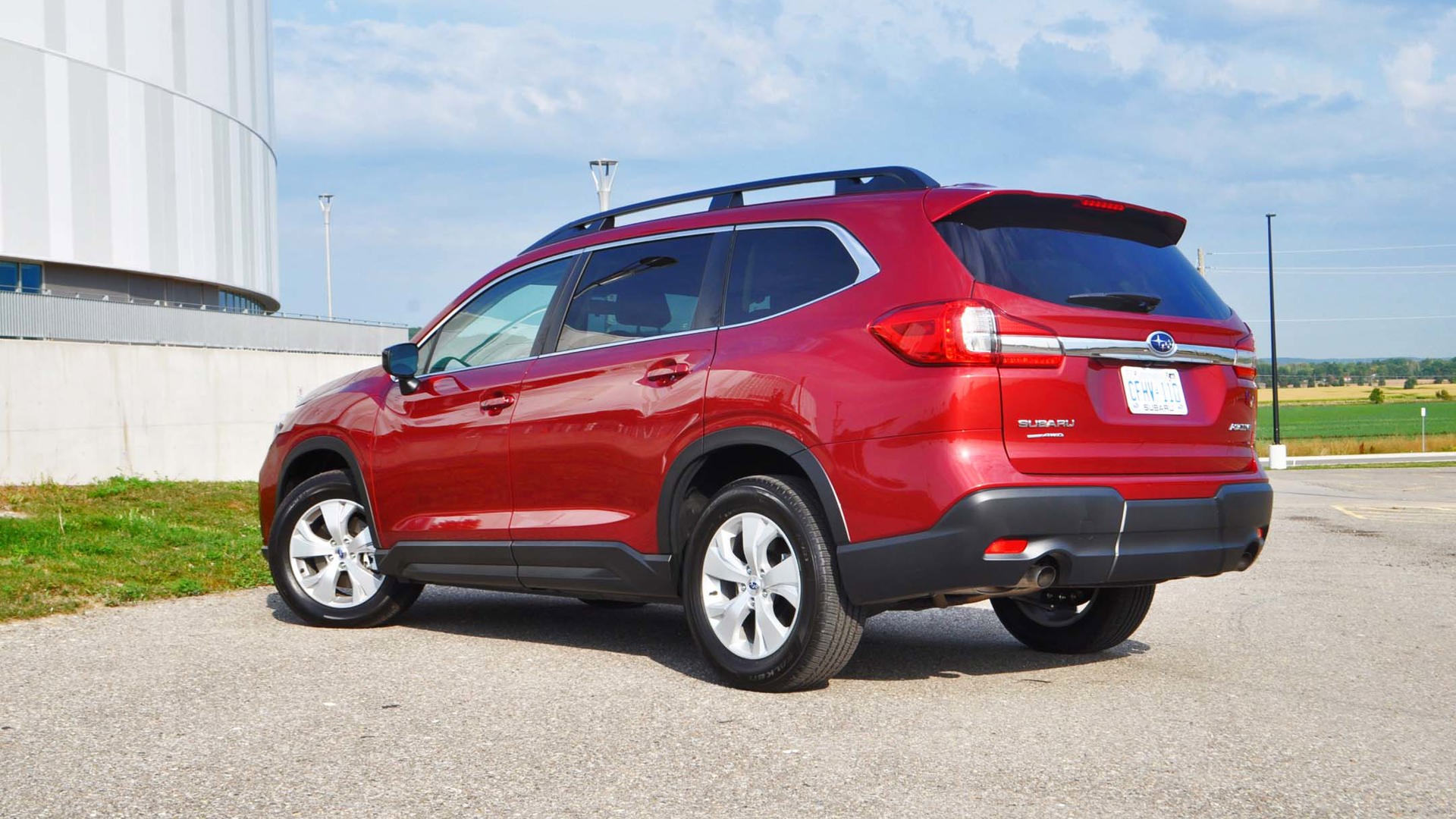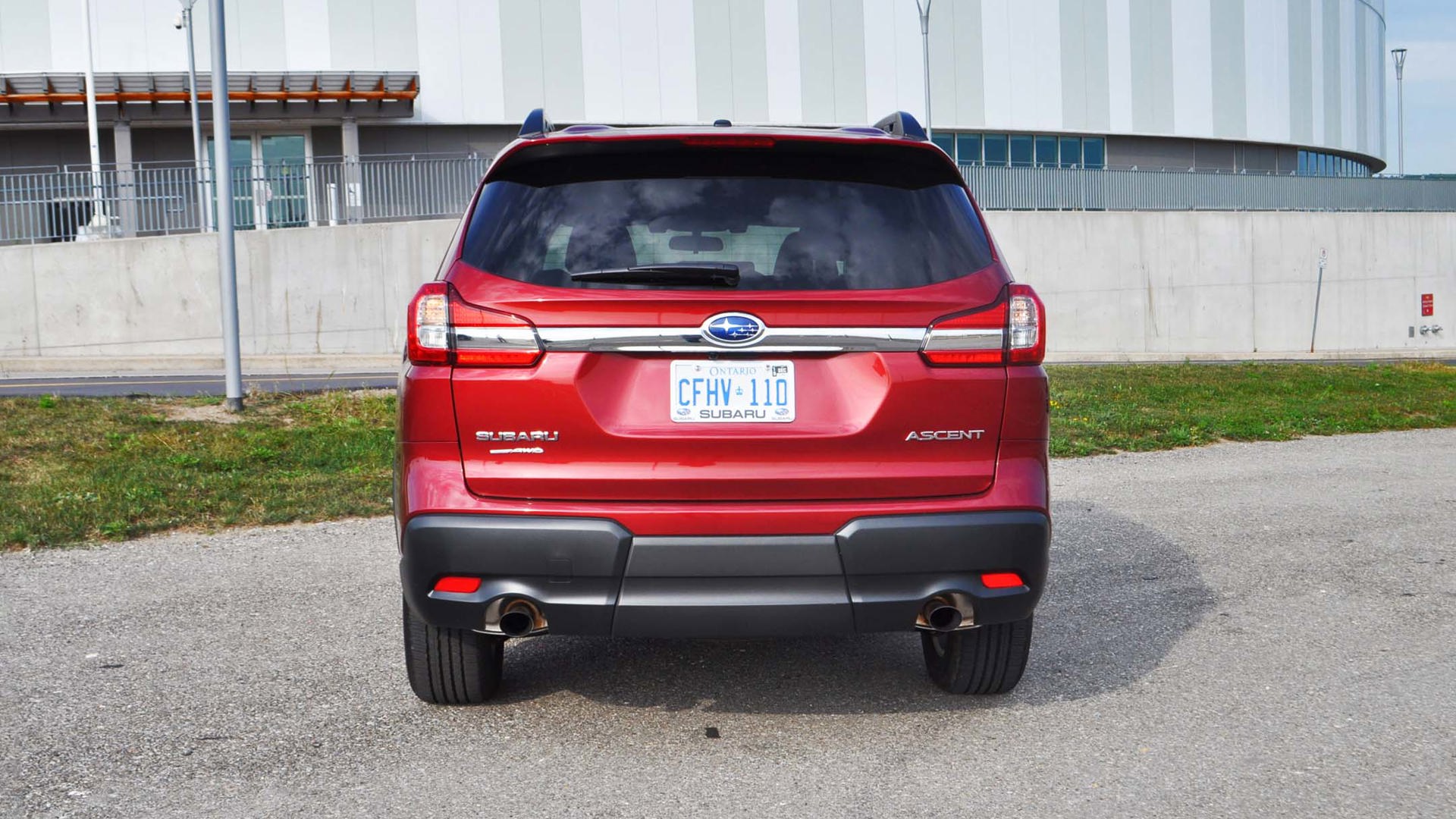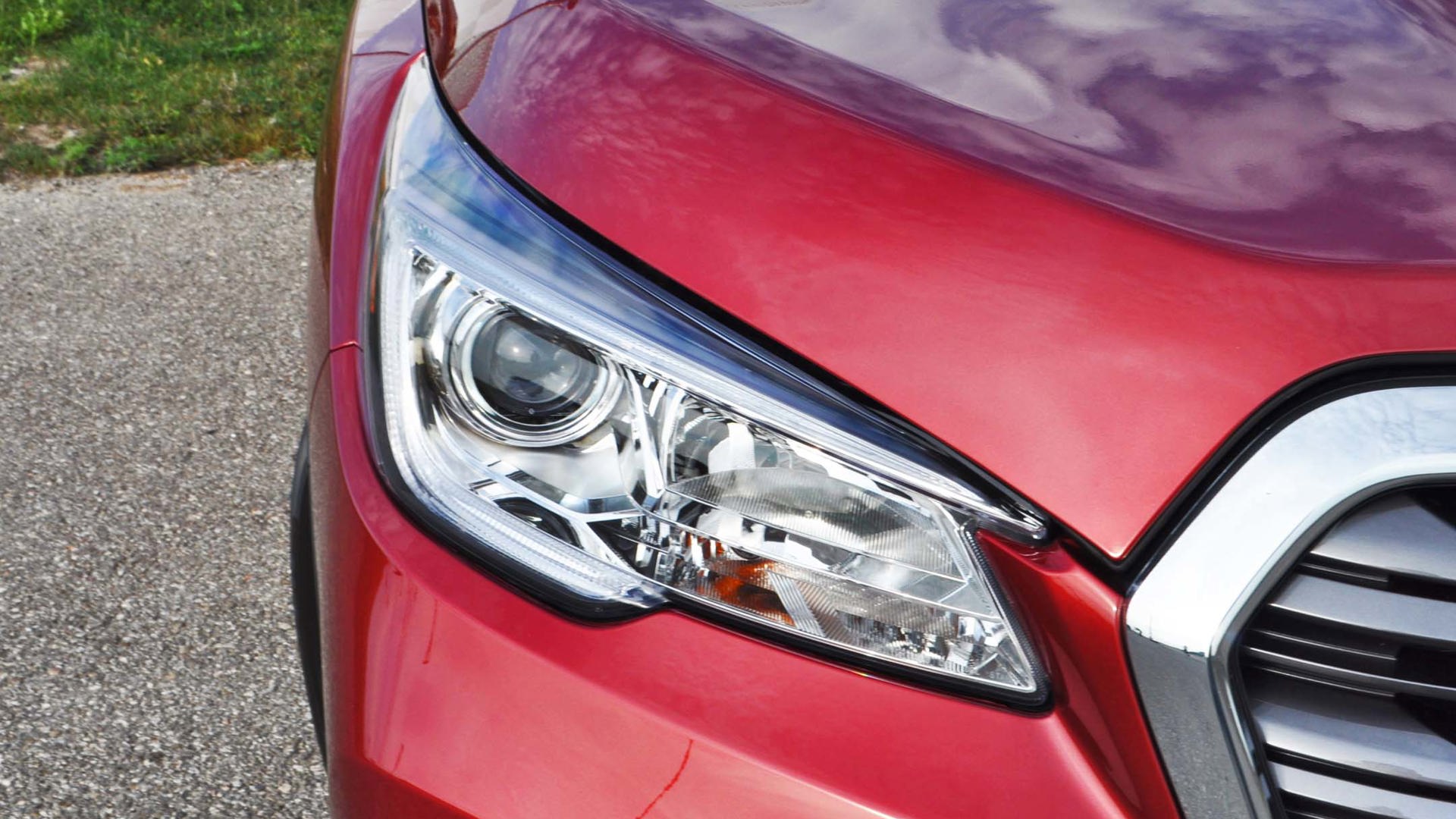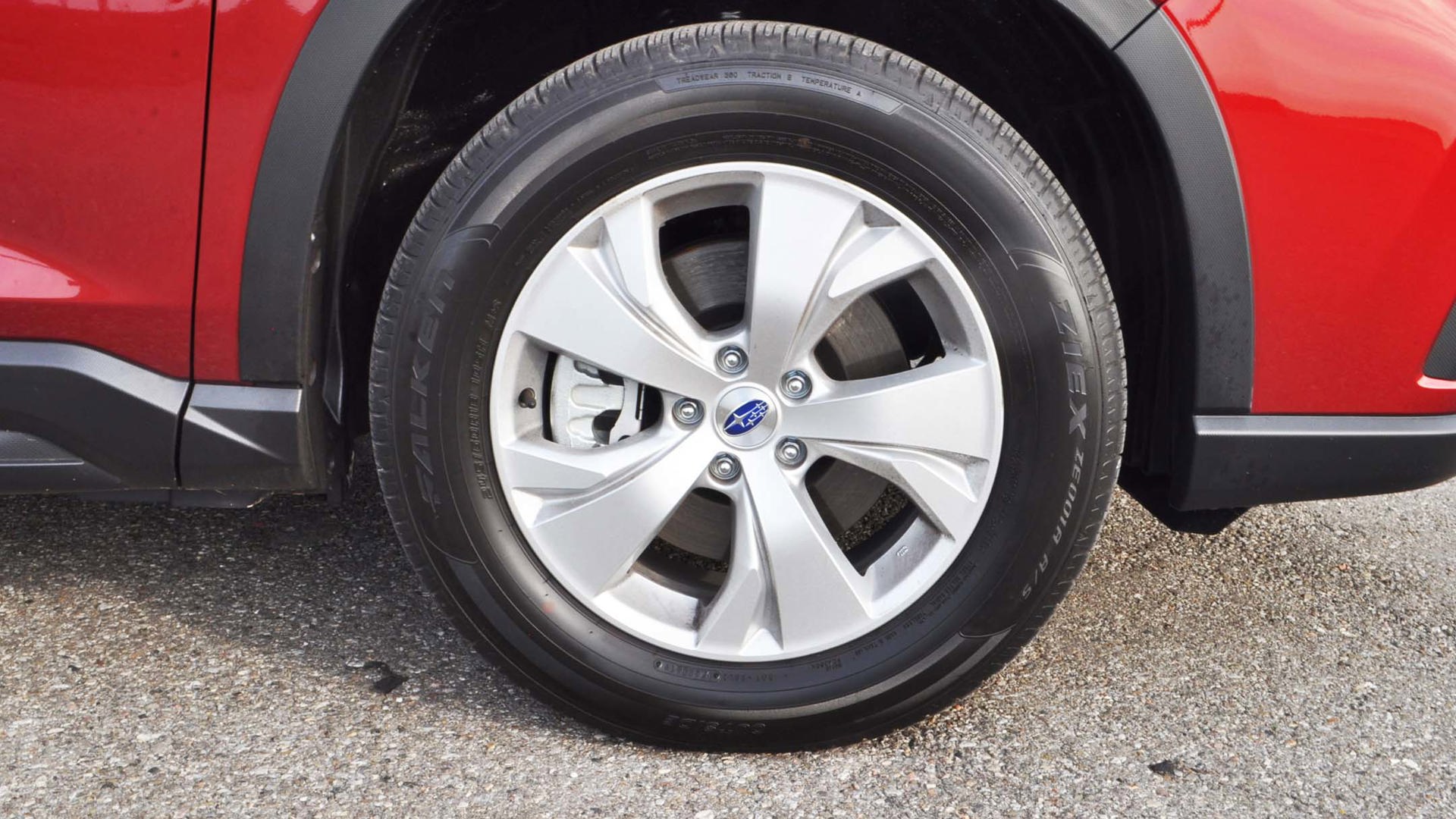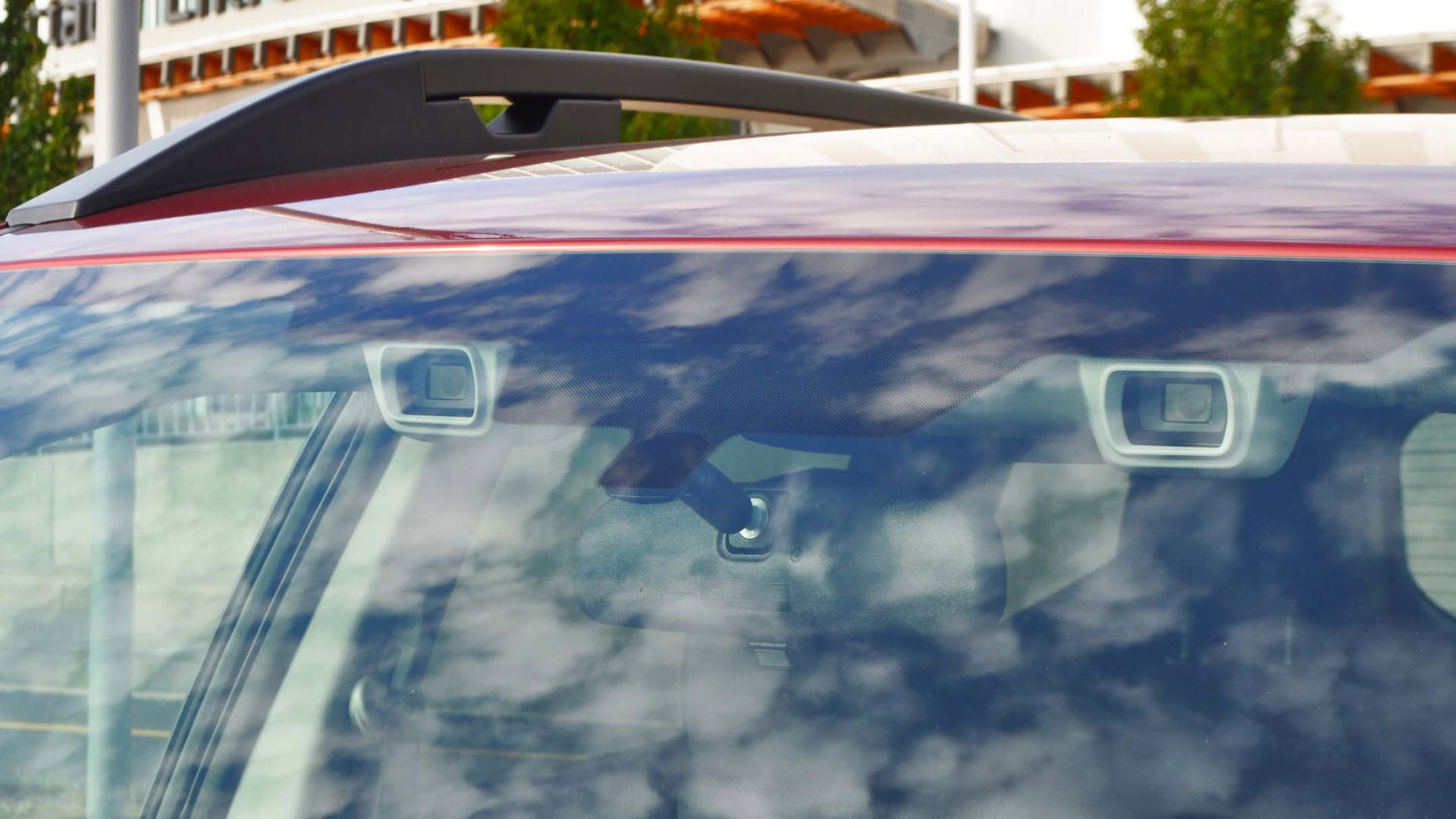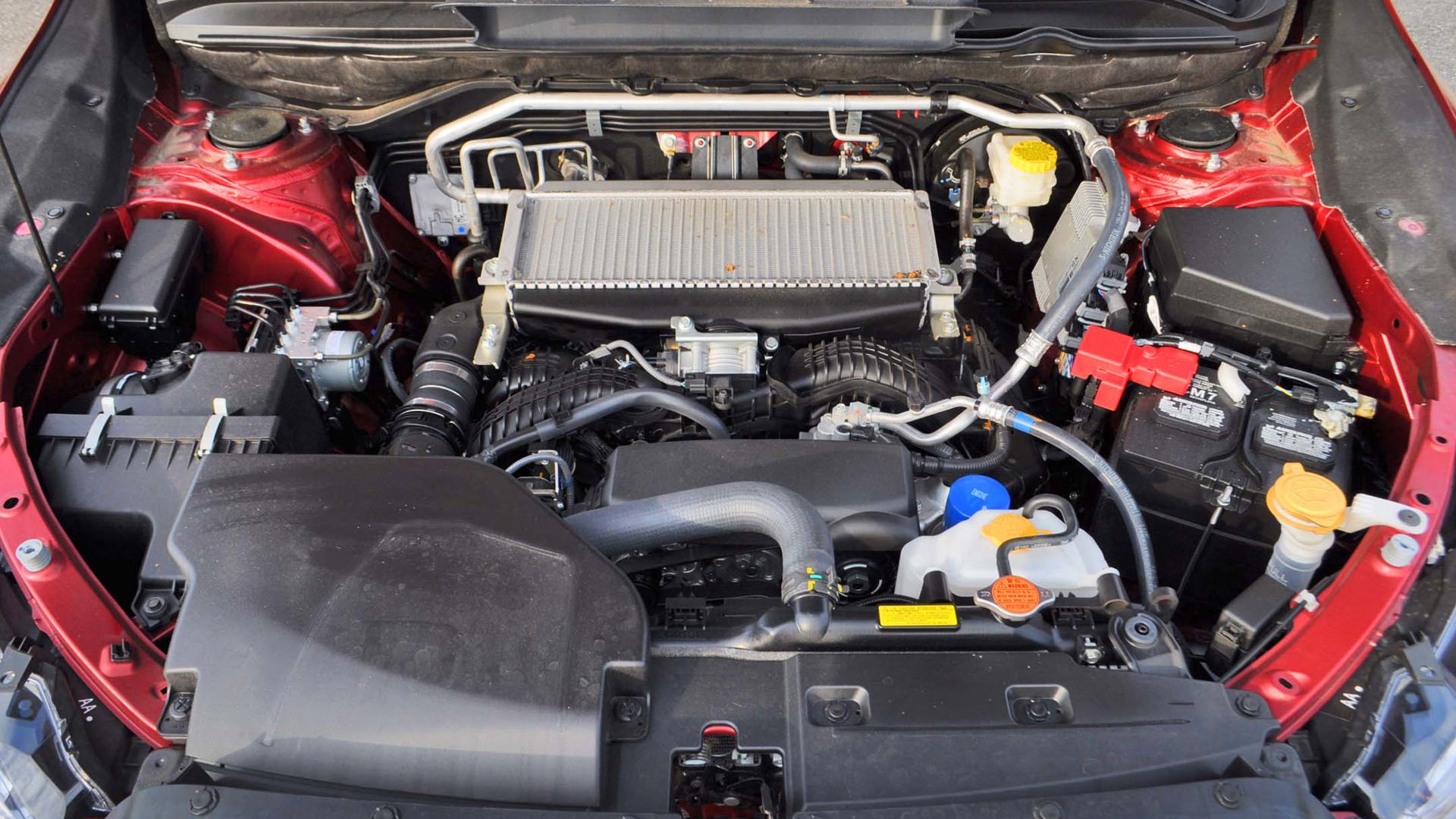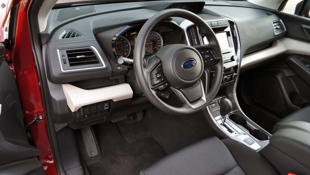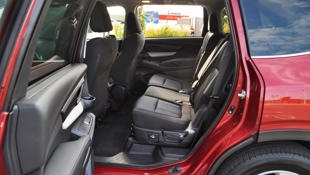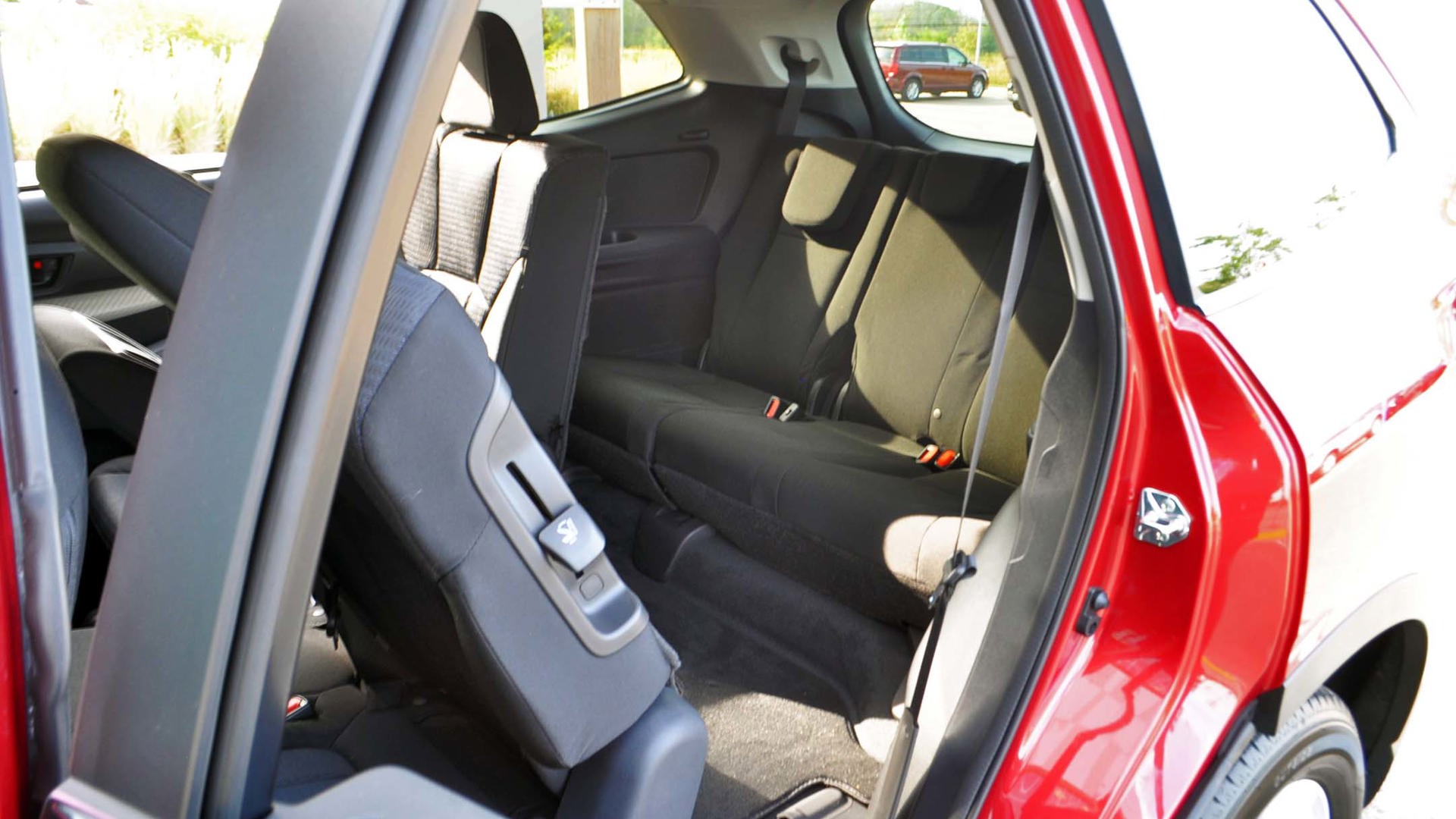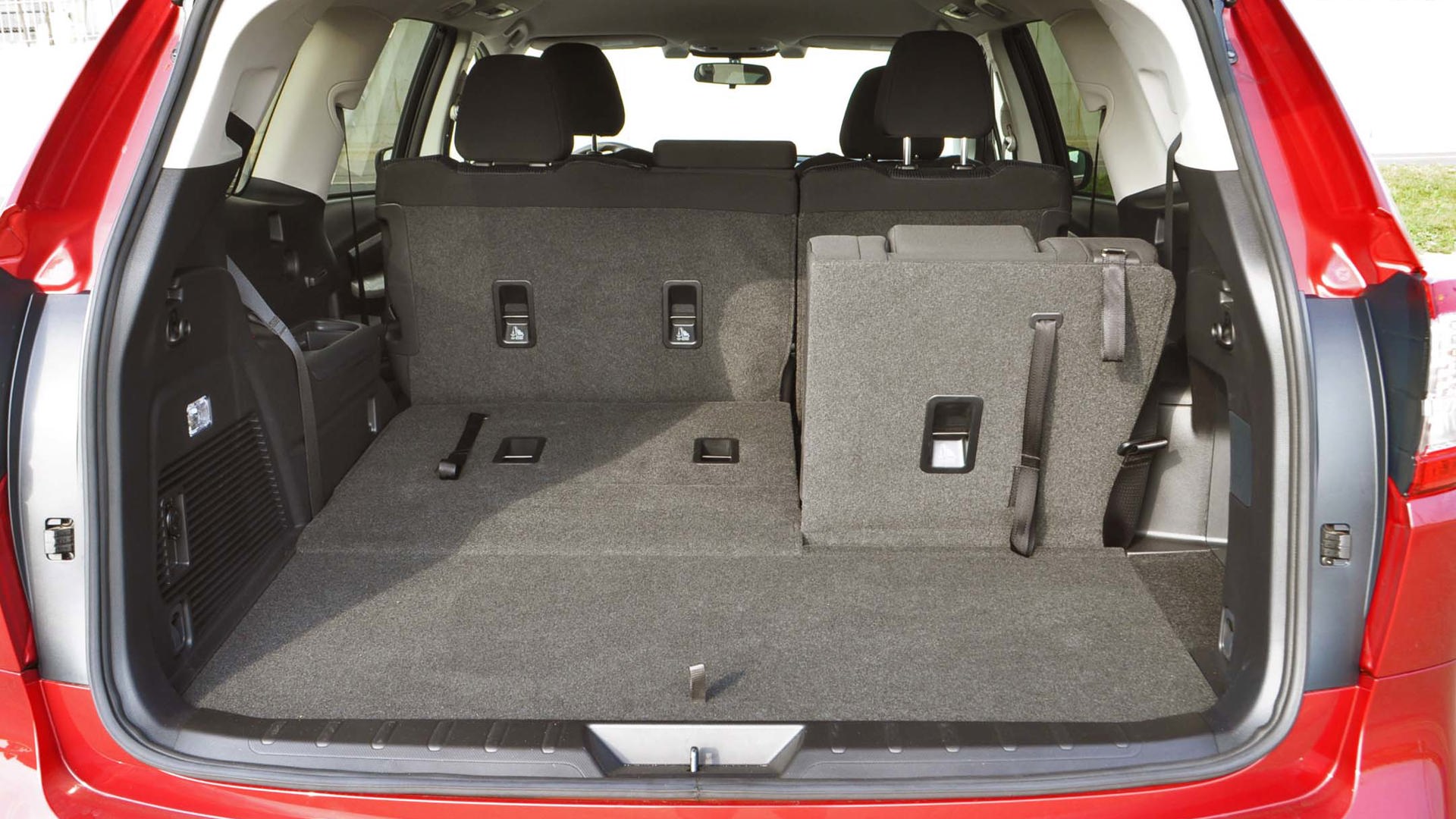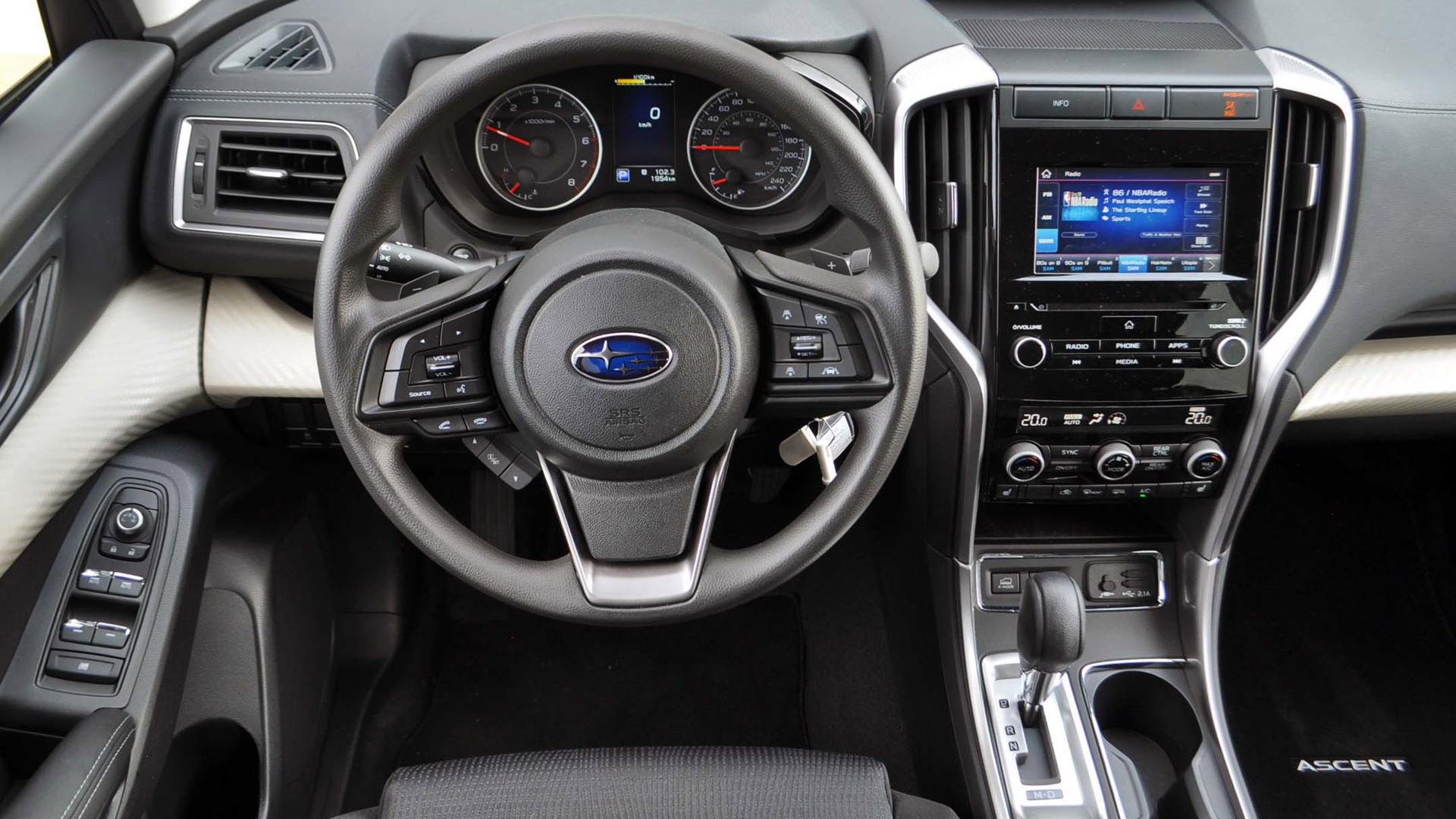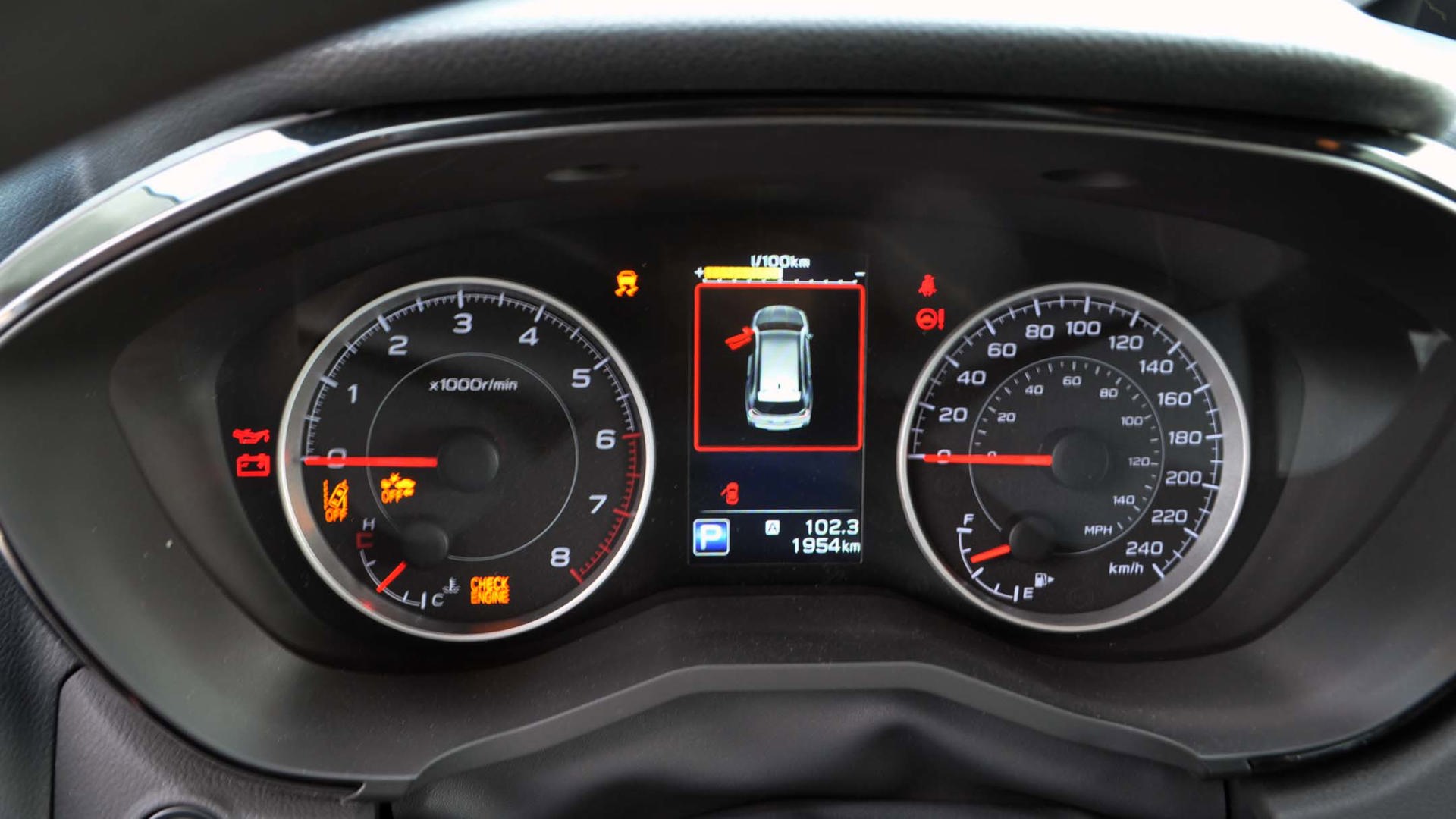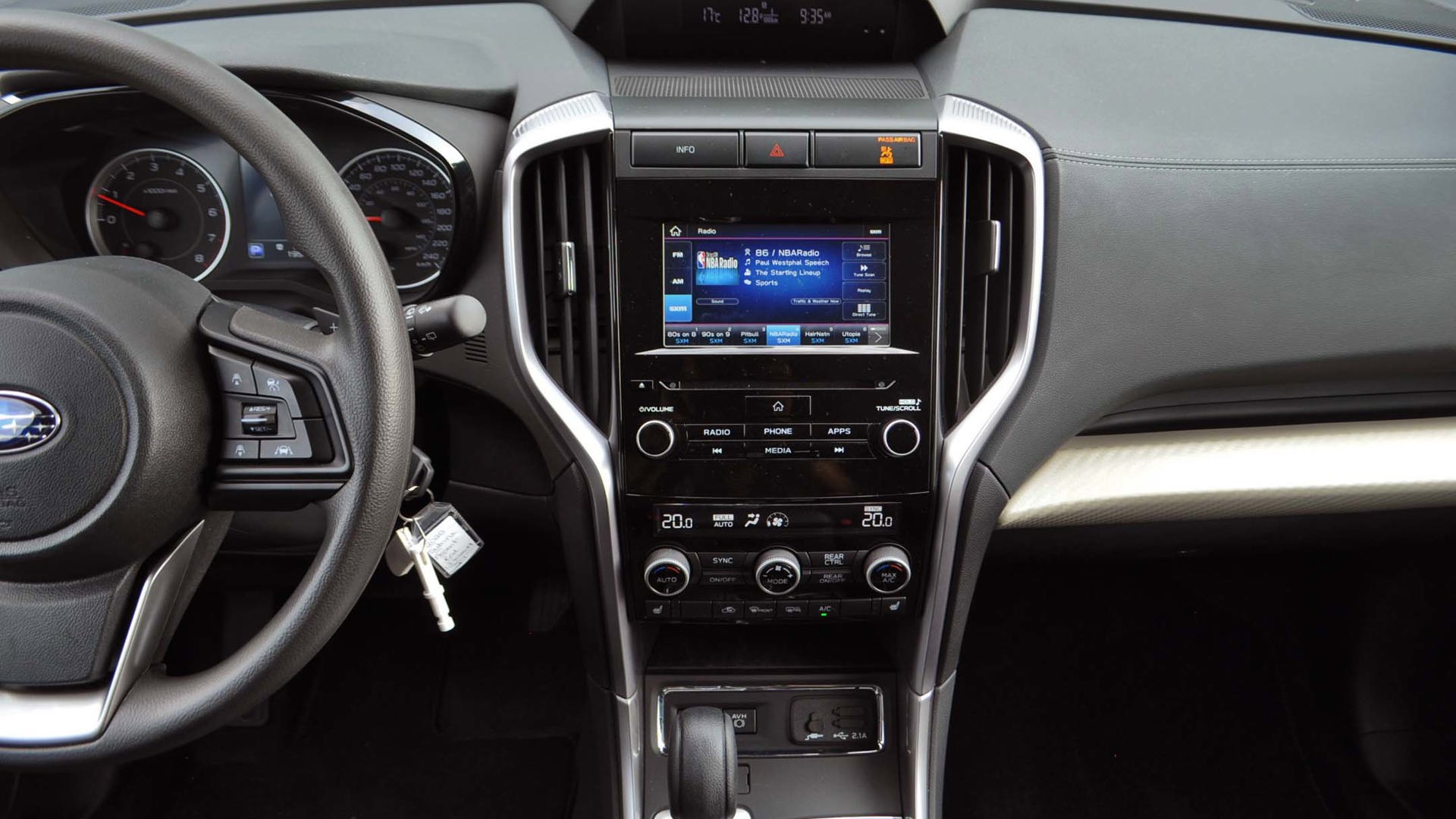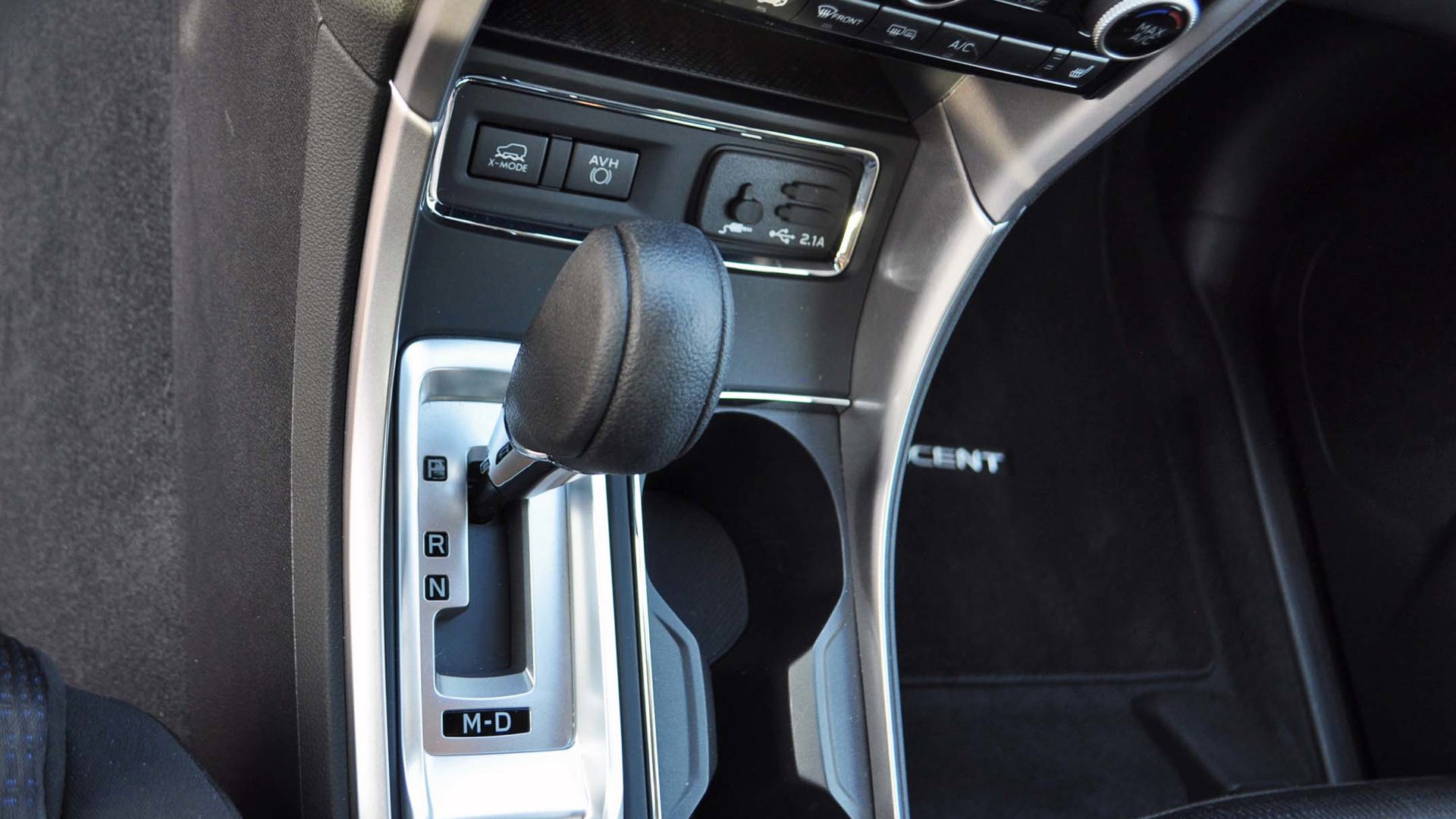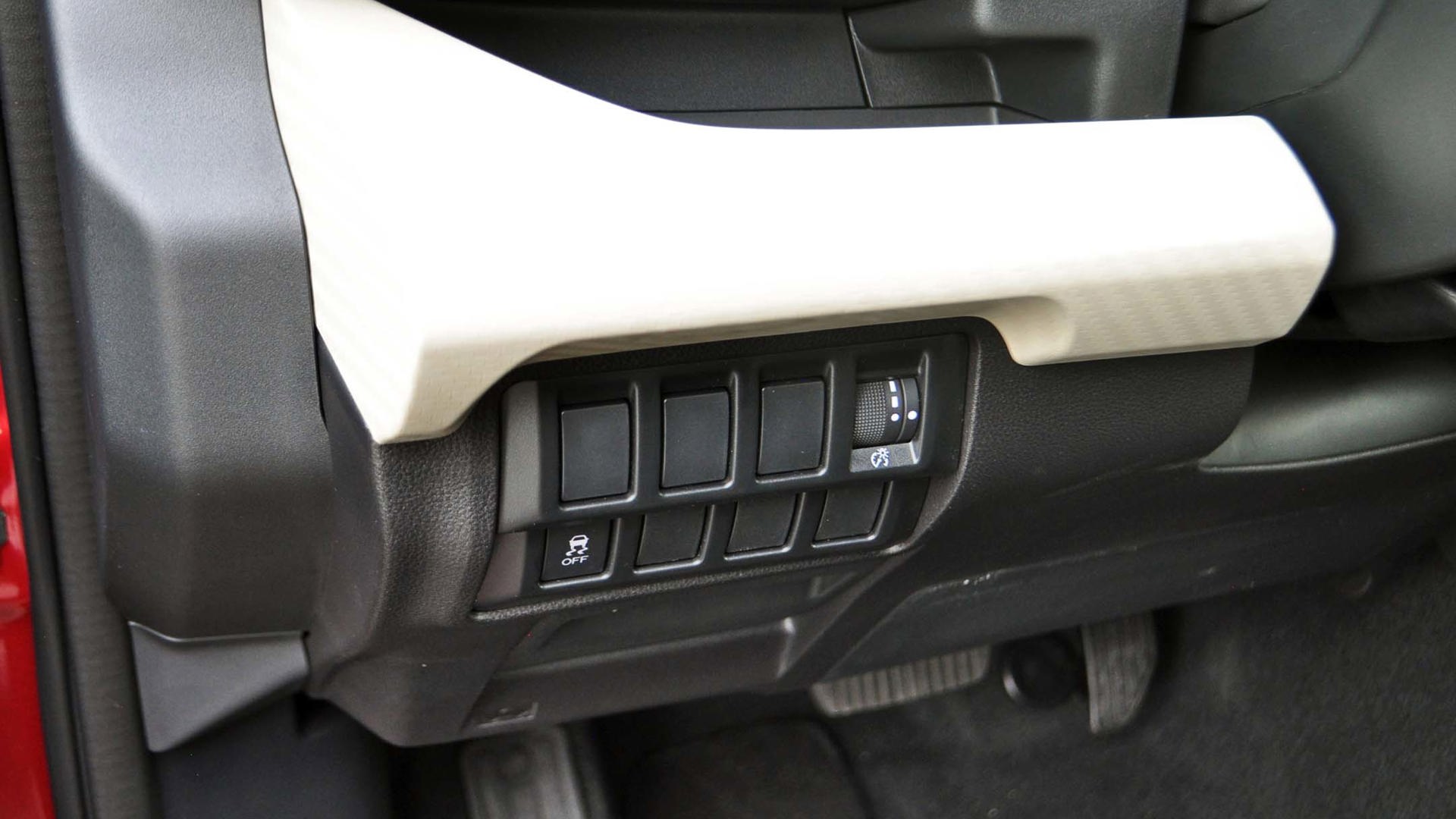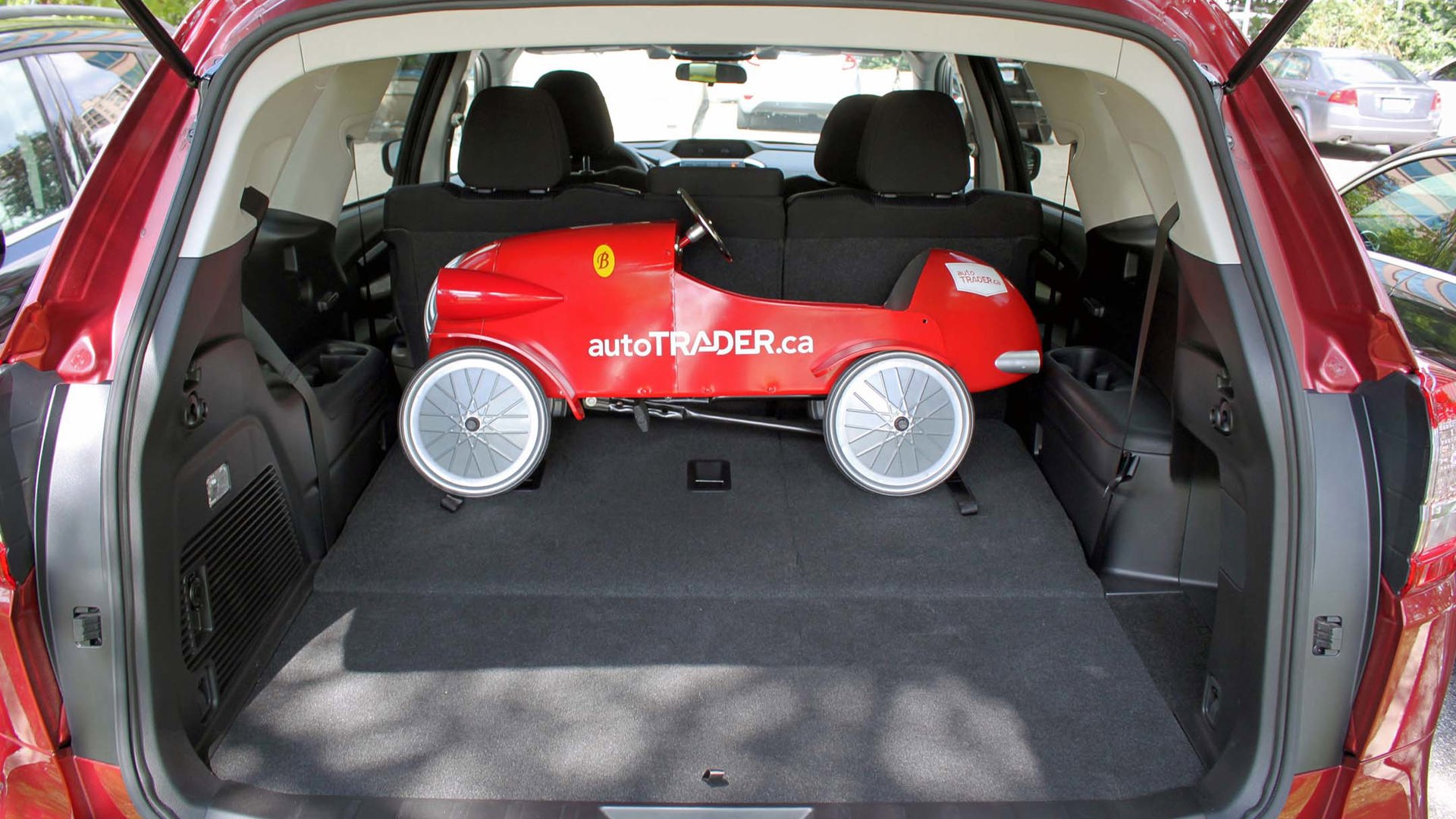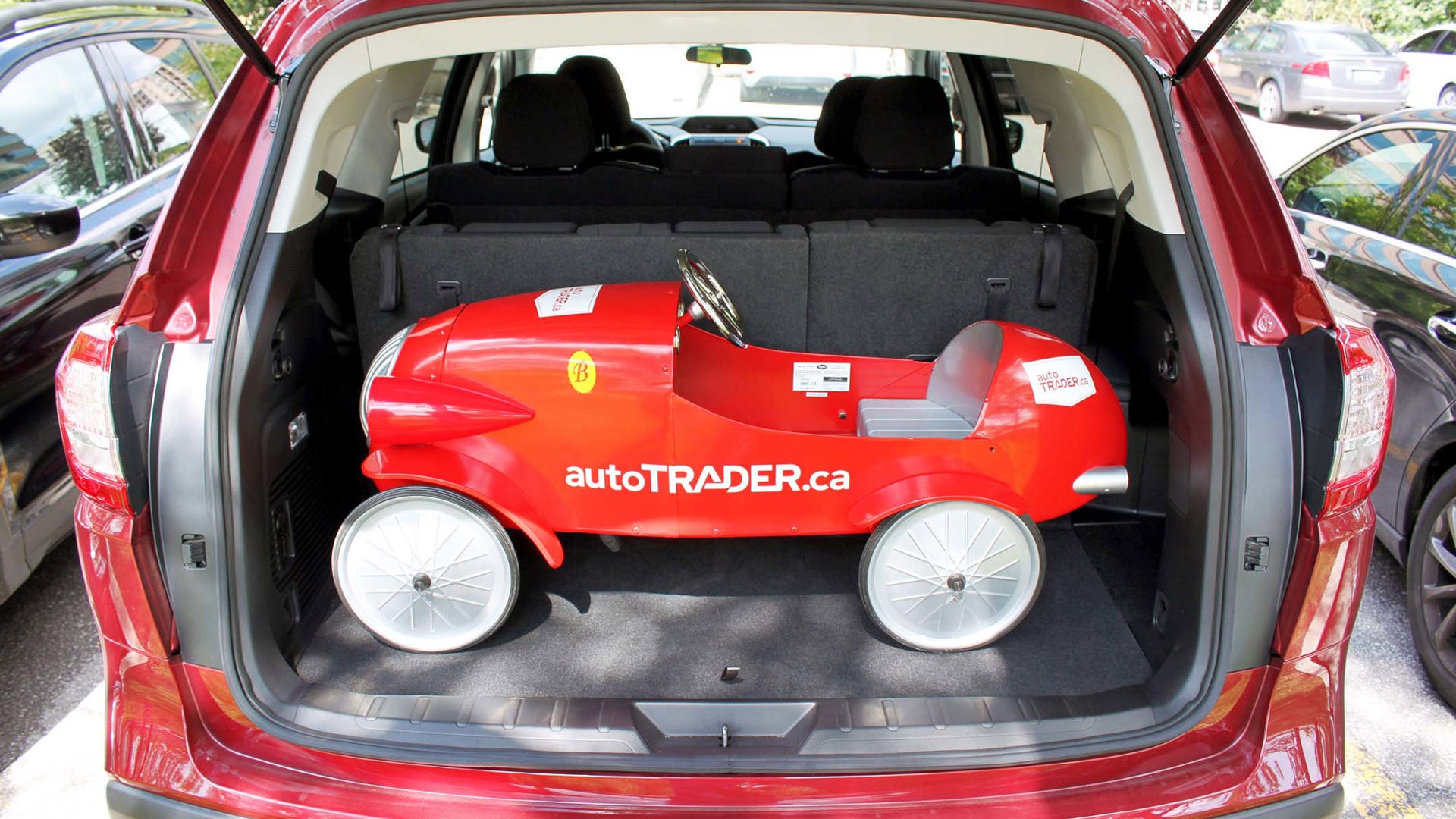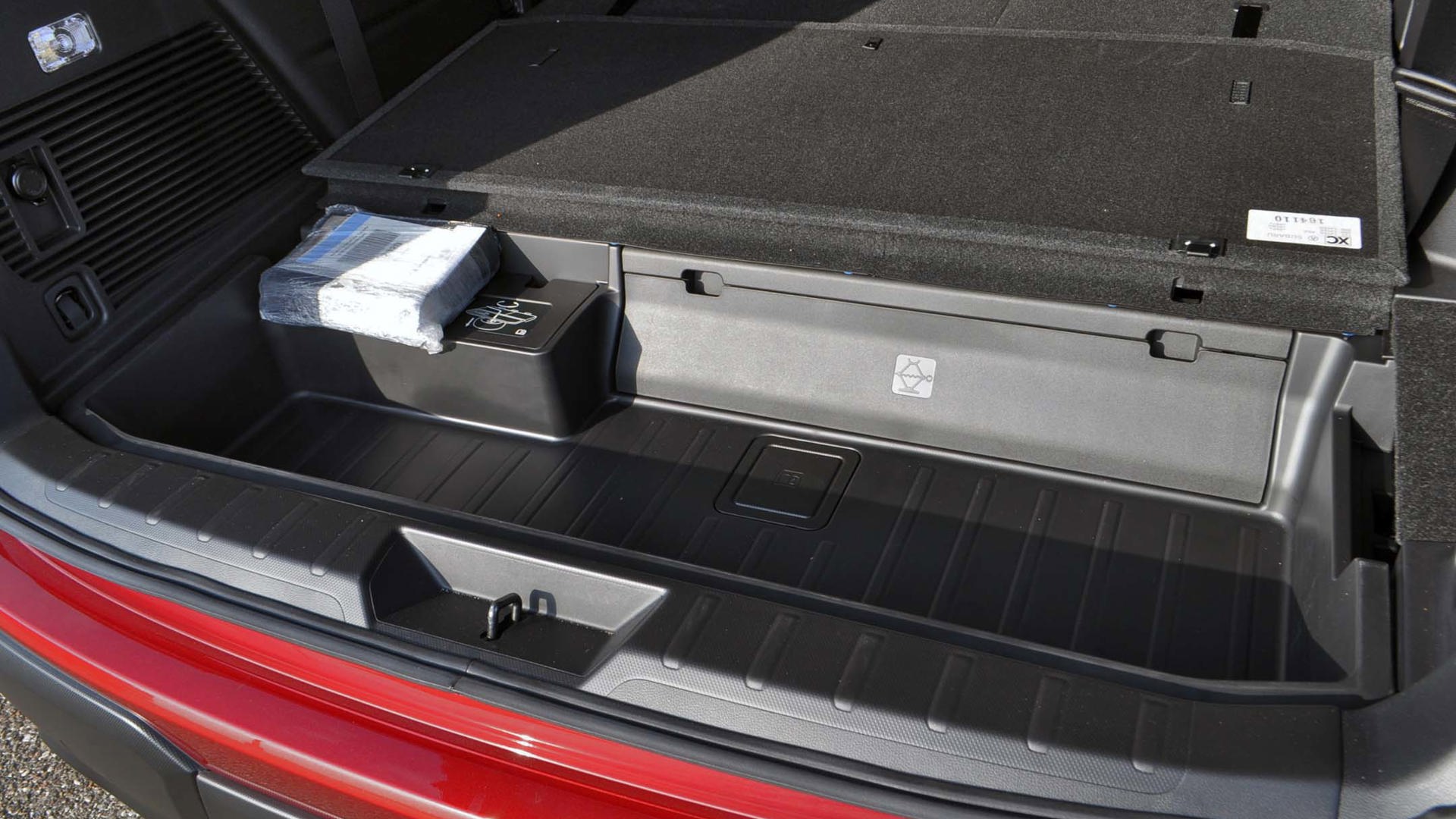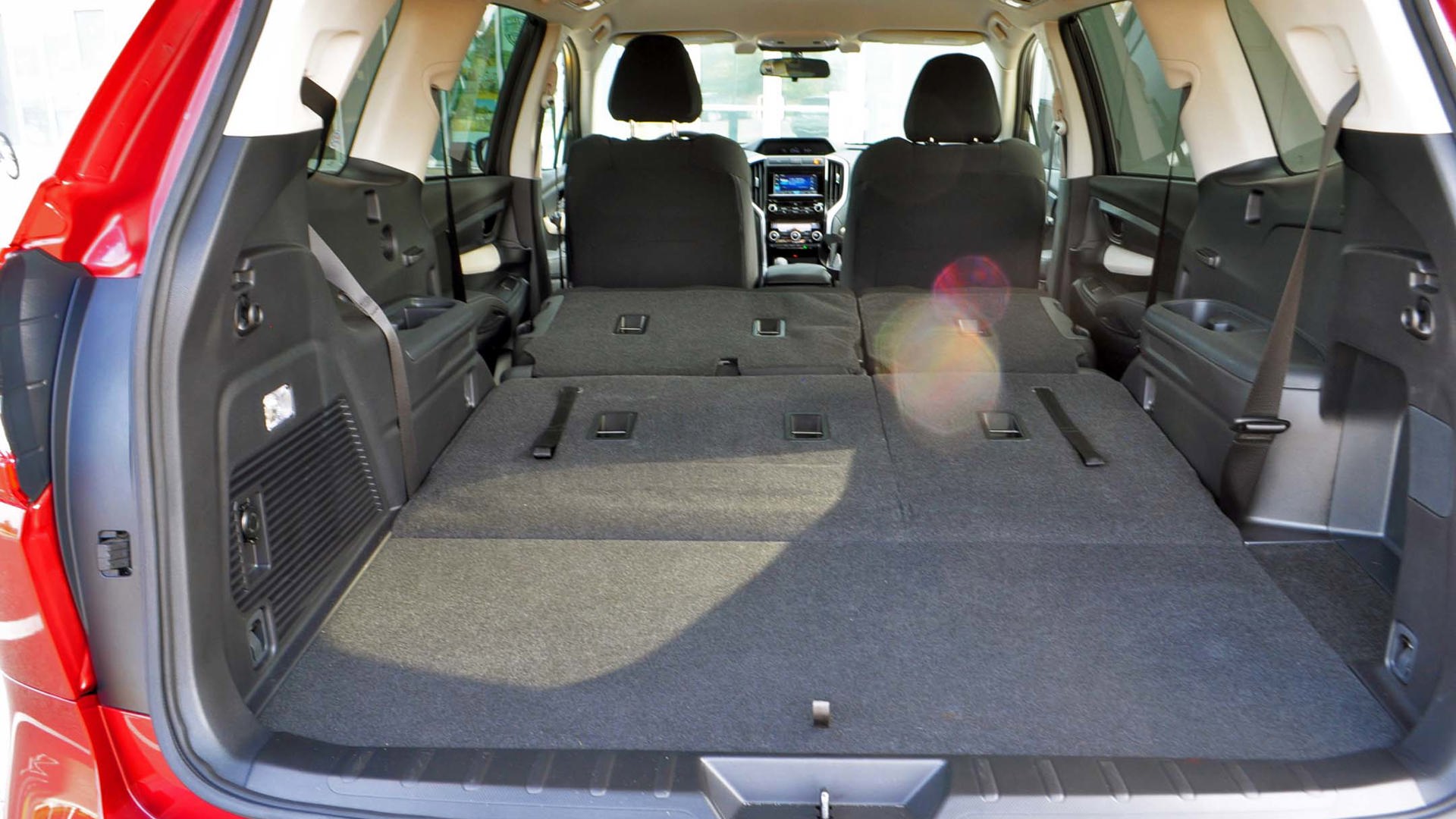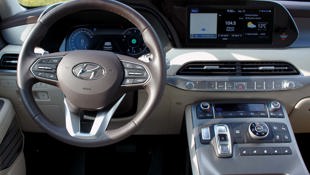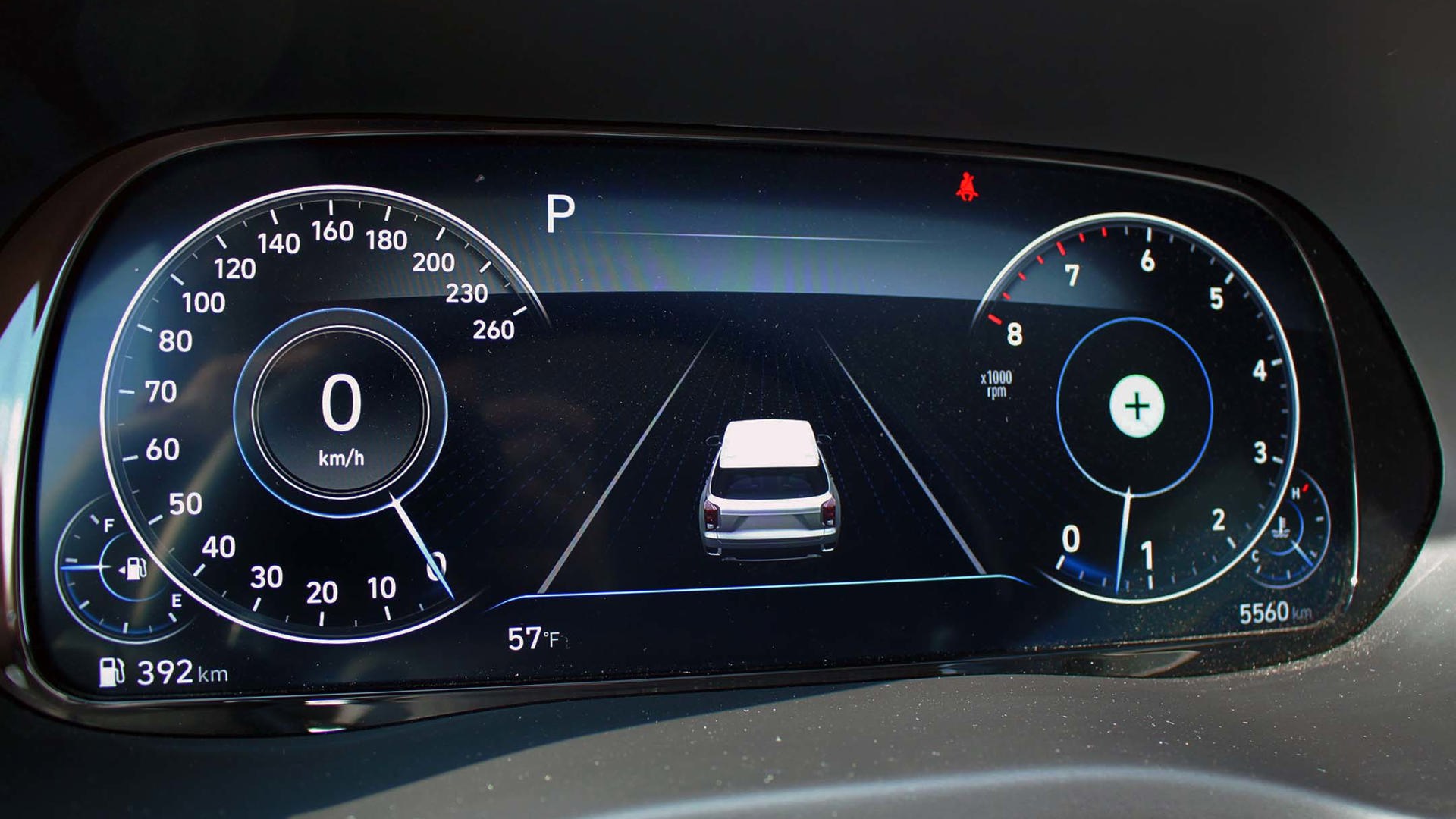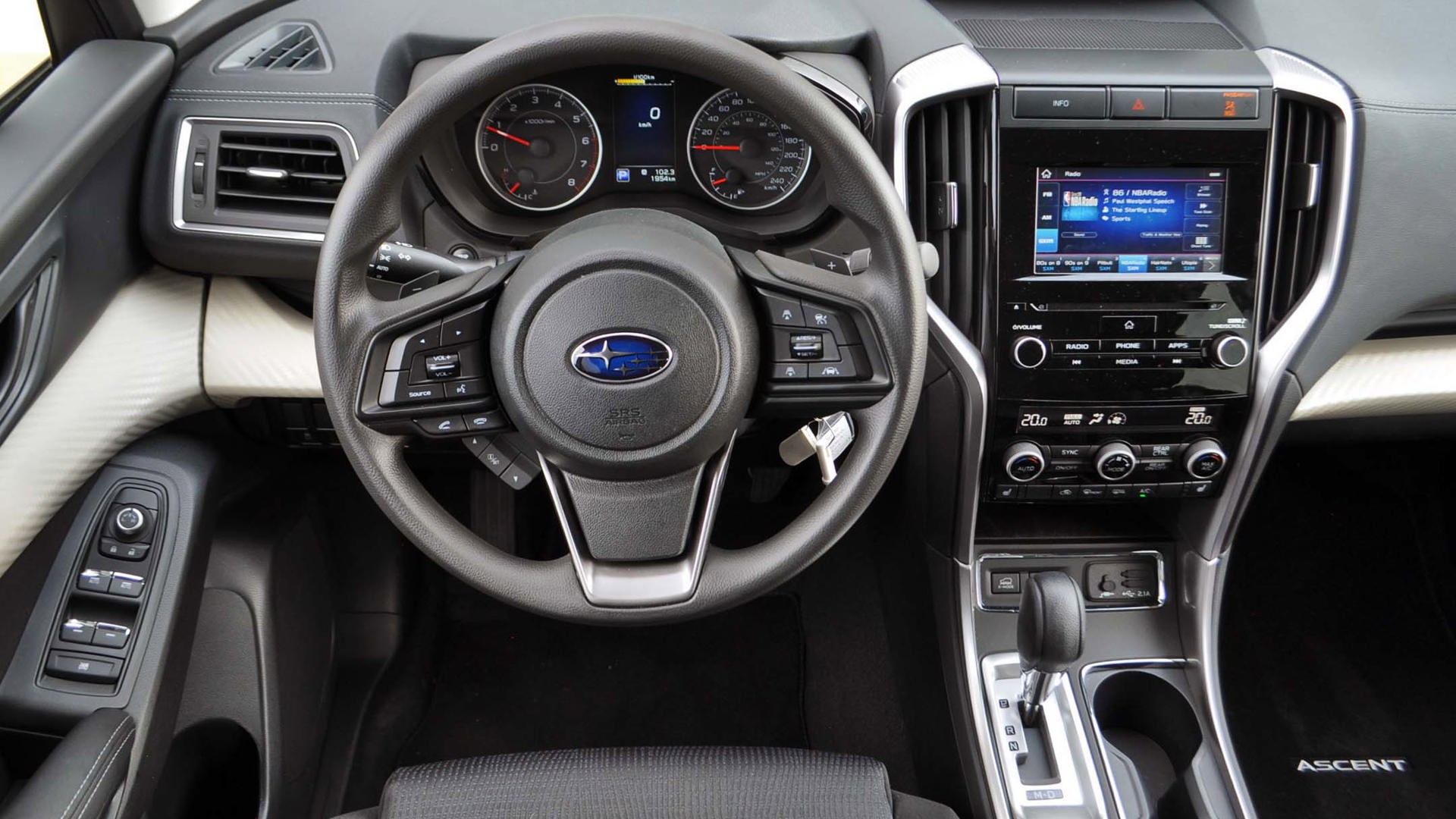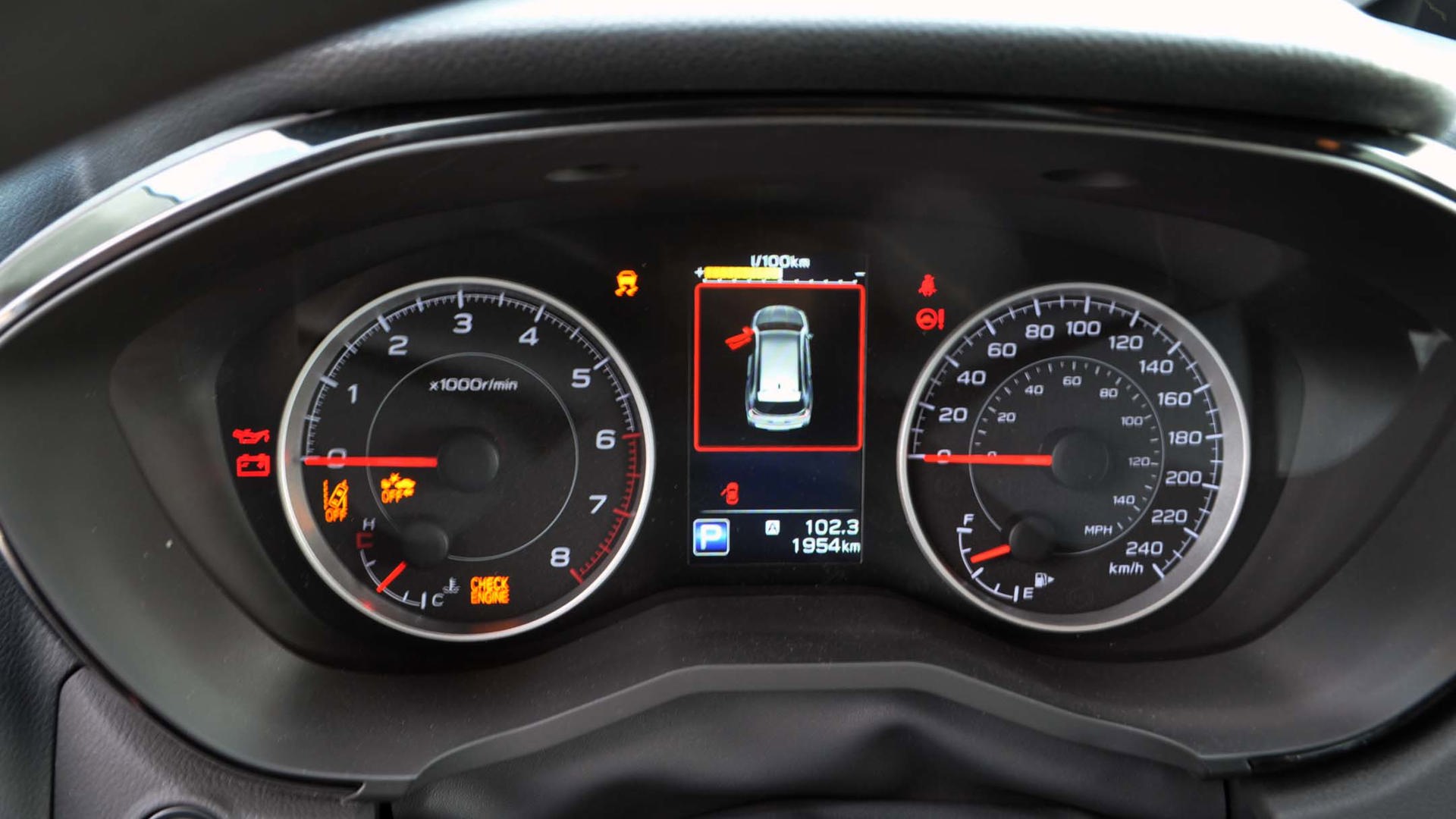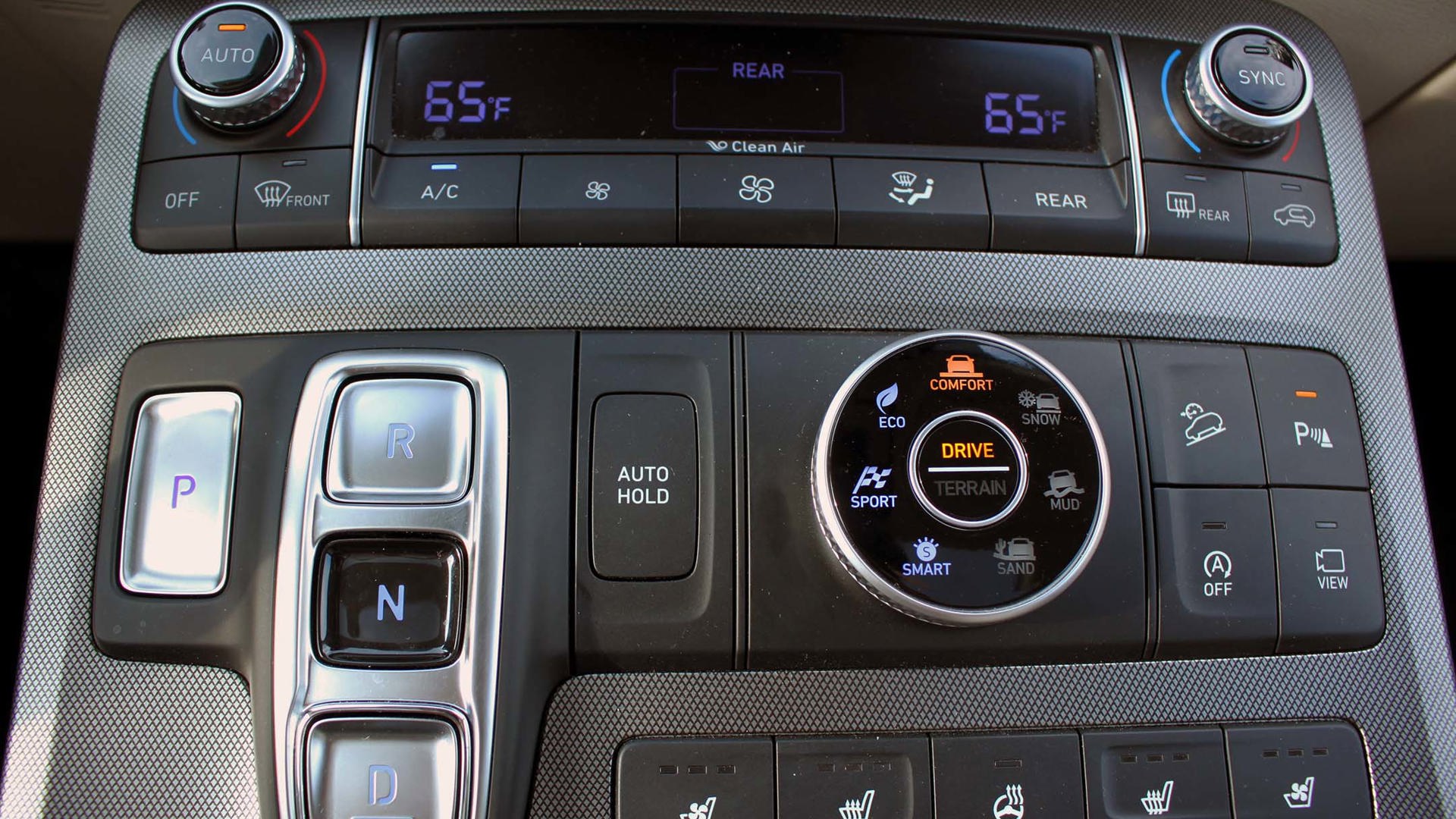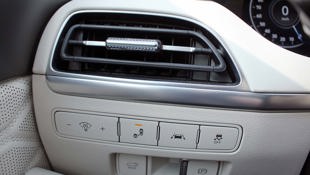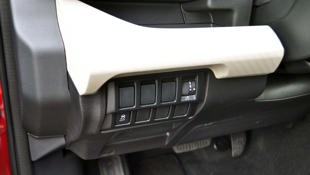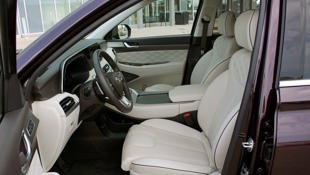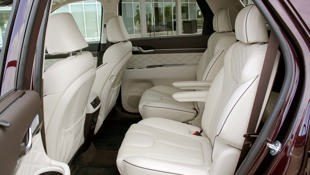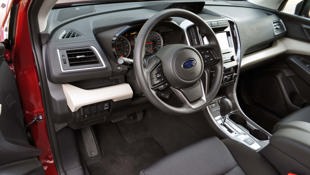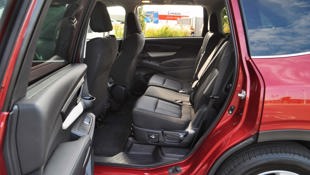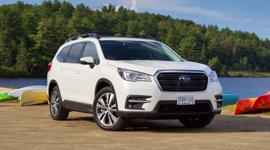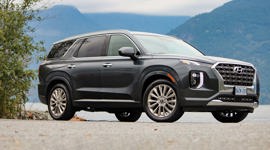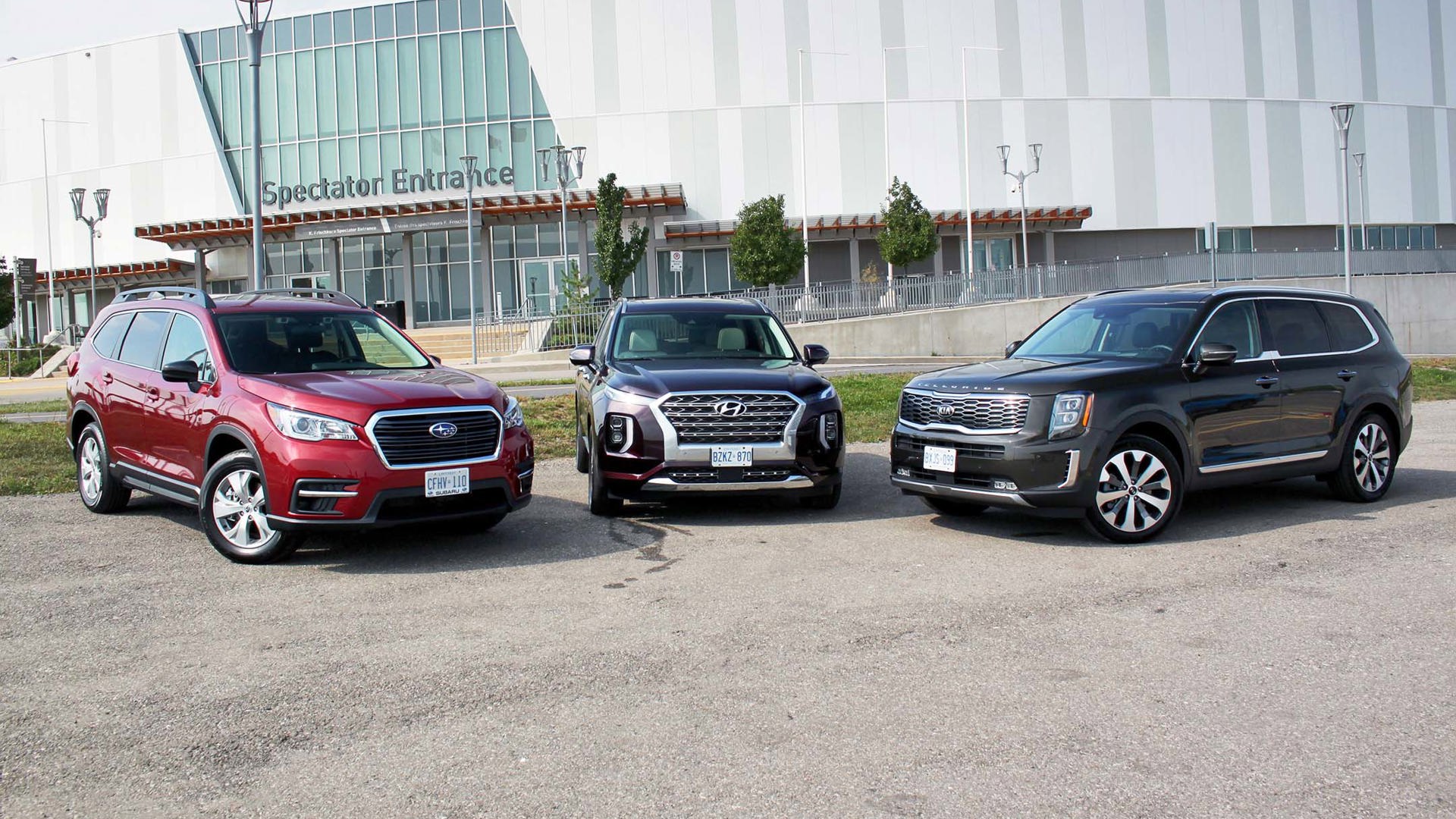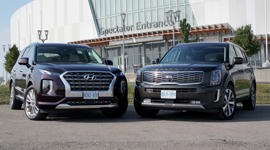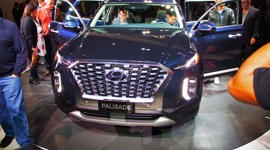Comparison Data
|
2020 Hyundai Palisade Ultimate
|
2020 Subaru Ascent Convenience
|
|---|---|
|
Engine Displacement
3.8L
|
2.4L
|
|
Engine Cylinders
V6
|
H4
|
|
Peak Horsepower
291 hp @ 6,000 rpm
|
260 hp @ 5,600 rpm
|
|
Peak Torque
262 lb-ft @ 5,200 rpm
|
277 lb-ft @ 2,000–4,000 rpm
|
|
Fuel Economy
12.3/9.6/11.1 L/100 km cty/hwy/cmb
|
11.6/9.0/10.4 L/100 km cty/hwy/cmb
|
|
Cargo Space
509 / 1,297 / 2,447 L behind 3rd/2nd/1st row
|
504 / 1,345 / 2,449 L behind 3rd/2nd/1st row
|
|
Base Price
$53,999
|
$36,695
|
|
A/C Tax
$100
|
$100
|
|
Destination Fee
$1,910
|
$1,800
|
|
Price as Tested
$56,209
|
$38,595
|
|
Optional Equipment
$200
|
None
|
Hyundai’s new three-row crossover is here and it’s promising a lot for your money. From space to luxury and style, the Palisade is looking to shake things up in a segment that could use exactly that. To see how it stacks up, we brought along another new three-row CUV, the Subaru Ascent, which is also out to make its mark with a ton of standard equipment to go with standard capability. While their core missions are largely the same, these two achieve very different results.
Exterior Styling
The exterior designs of these two crossovers is among the most difficult aspects to judge. The Palisade seems a bit overstyled, while the Ascent is the complete opposite. Each one can be attractive to the right buyer, as the Hyundai Palisade can win buyers with its eye-catching flair, including chrome accents and extra LED lighting. The Ascent, meanwhile, can appeal to shoppers seeking something more understated.
Interestingly, the Palisade looks unlike anything else in Hyundai’s lineup, giving it a unique identity, while the Ascent looks like a thoroughbred family member. At a distance, it’s hard to tell an Ascent apart from, say, a Forester, while the Palisade is unmistakable from any distance.
Hyundai Palisade Exterior Styling: 7.5
Subaru Ascent Exterior Styling: 7
Interior Styling
Hyundai’s approach to the Palisade was to jam as much flair into it as possible. The result is a vehicle that approaches the levels of a luxury model. The mix of materials in the Palisade is wonderful, with soft suede lining the roof, and the seats and door panels swathed in fancy cream-coloured leather. The quilted and perforated seats lend to the upscale feel, accented with a textured metallic trim that feels high-end to the touch. The digital gauge cluster is a high-tech highlight, helping make the Palisade feel like a truly special vehicle. Our only advice is to think twice about light-coloured interior upholstery, as kids can make a mess of it in no time.
While our Palisade tester is the most expensive iteration of the vehicle, our Subaru Ascent is the most affordable model. Almost $20,000 separate the two price tags of the vehicle, which is a huge margin. Fortunately, we have tested fully loaded Ascents in the past, and while its interior design and appointments are much higher quality than other Subaru models, it still feels left behind by this Palisade. Fortunately, this Ascent swaps out the second-row captain’s chairs for a bench, allowing for up to eight occupants in the crossover. While the Ascent has a more basic layout, it’s easy to get used to and won’t leave you distracted or mesmerized by the fanciness.
Hyundai Palisade Interior Styling: 9
Subaru Ascent Interior Styling: 6
Interior Space and Practicality
When it comes to space and practicality, these two don’t disappoint. With 509 L of space behind the last row of seats in the Palisade, the Hyundai outshines the Subaru once again. However, when the third row is folded, the crossover offers 1,297 L, a number that grows to 2,447 L when the second row is folded – both measuring less than what’s offered in the Ascent. Fortunately, the Palisade feels very spacious for its passengers. For buyers who will use the second row more than the third row, the Palisade offers more shoulder-, hip-, and legroom than the Ascent.
The Subaru is quite spacious too, with 504 L of cargo when all seats are up, 1,345 L with the third row down, and 2,449 L of cargo with all rows folded. The amount of space for gear in the back when the third row is folded is staggering, and this is an ideal setup for those with lots of kids’ gear or pets to haul around. Then again, if you keep the third row folded, you miss the Ascent’s biggest advantages over the Palisade: Its rearmost passenger room.
Hyundai Palisade Interior Space and Practicality: 7.5
Subaru Ascent Interior Space and Practicality: 8
Features
Since it’s a fully loaded example, the Palisade impresses anyone who pokes around the cabin or takes it for a spin. There are enough features here to leave even luxury shoppers impressed. While the Hyundai boasts a powered liftgate, there are additional controls to fold and recline the third row of seats (electronically, not just a release button to fold them), and buttons to control the second row as well. You’ll see a large two-panel sunroof as well. Third-row passengers also get access to a special automatic climate control zone, and second-row passengers get heated and vented seats along with sunshades for the windows. They can even plug in their mobile devices in ports found in the backs of the front seats, showing clever use of space.
There are seven USB ports in total, making the Palisade more of a mobile charging bank than anything else. There’s even a wireless charging pad for those who can’t be bothered with cables. The infotainment screen is large and easy to use, with support for Android Auto and Apple CarPlay. It also has a head-up display and a beautiful digital gauge cluster. There’s an abundance of information available to drivers and it leaves the crossover feeling high tech and extravagant, a trait that’s unique to the Palisade.
The base model of the Ascent can’t compete with the Palisade’s overall package, but it offers quite a lot for very little. There’s a three-zone climate control system and heated seats up front. The infotainment system is much smaller and doesn’t come with navigation, but does have support for Android Auto and Apple CarPlay, which runs mobile device data for navigation information. There are several USB ports for charging devices as well. Fully loaded Ascent models do offer ventilated front seats and heated rear seats, but won’t offer high tech items like a head-up display.
Hyundai Palisade Features: 9
Subaru Ascent Features: 6
Powertrains
The Palisade is powered by a 3.8L V6 engine making 292 hp and 262 lb-ft of torque. It’s paired to an eight-speed automatic, and our Ultimate trim model features all-wheel drive. At times, it seemed like the motor was a bit stressed trying to motivate such a large vehicle. Throttle response can feel a bit delayed and setting off from a standstill can be a bit lethargic. However, the vehicle does downshift and accelerate easily, and the motor feels very smooth. It would be nice, however, to pair this impressive vehicle with a bit more torque and excitement. The Palisade features a few drive modes that change the way the throttle feels, how the transmission shifts, and even how the vehicle will behave in low-traction environments like in snow or sand.
The Ascent features a 2.4L turbocharged flat-four, which is mated to a CVT and Subaru’s Symmetrical all-wheel drive system. The engine makes 260 hp and 277 lb-ft of torque, which feels great as the CVT manages to make use of every bit of power the motor has. Things can get a bit loud when pushed, but the Ascent feels a bit more lively at lower speeds, and can still initiate passes easily. While the Ascent doesn’t have a bunch of drive modes to select, it always seems to be ready for the conditions. For those looking for more confidence or control, an off-road-focused X-Mode is found alongside paddle shifters to swap between a few preset gear ratios.
Hyundai Palisade Powertrain: 7.5
Subaru Ascent Powertrain: 8
Fuel Economy
The Palisade manages to earn 12.3 L/100 km in the city, 9.6 on the highway, and a combined rating of 11.1 L/100 km.
The Ascent is far more fuel-friendly, earning 11.6 L/100 km in the city, 9.0 on the highway, and a rating of 10.4 L/100 km combined. The smaller engine and CVT show their positive side here, outshining the Hyundai’s powertrain and its automatic engine start-stop feature.
Hyundai Palisade Fuel Economy: 6.5
Subaru Ascent Fuel Economy: 8
Driving Feel
The Hyundai feels very regal and premium, and is very thorough in that experience. Looking at it, spending some time in the cabin, and driving it all leave the impression that this vehicle was designed to change some minds about Hyundai. On the road, you’ll find that the ride is serene and quiet, with the only noise coming from the hum of the tires. The Palisade doesn’t feel particularly agile, which isn’t a trait you’d expect in something this big, but it is fairly responsive. Body roll is well controlled, so taking corners at speed never feels cumbersome or uncomfortable. The Hyundai also manages to soak up bumps and rough roads fairly well too, once again furthering that high-end feel. There are very few complaints about the Palisade. The first isn’t a huge one, as the vehicle sometimes doesn’t feel quite as quick or hurried as perhaps it should, though the selectable drive modes help quell the issue a bit.
The Ascent feels a bit more agile compared to the Palisade, which is to say it feels much smaller than its size would indicate. Despite this feeling, the Ascent still has lots of body roll and can pitch forward and backwards under braking and accelerating. It feels much less refined than the Palisade, and the noises you hear while driving are almost shocking in comparison to the Hyundai, which sounds so insulated. You can hear rattles and clunks in the suspension, and the Ascent doesn’t seem as well composed on broken pavement, but it performs adequately nonetheless. Although the speeds do come up quickly in the Ascent, they are accompanied by the noisy CVT, which takes a lot of getting used to.
Hyundai Palisade Driving Feel: 8
Subaru Ascent Driving Feel: 7
Safety
Both of these crossovers have been awarded the Top Safety Pick+ rating from the Insurance Institute for Highway Safety (IIHS). That’s the highest rating a vehicle can receive from the institute and takes into consideration a vehicle’s crash test results, headlights, child-seat anchor ergonomics, and crash prevention features.
The active safety technology in both vehicles is impressive. The Palisade features a driver attention warning system, forward collision prevention with pedestrian detection, lane-keeping assistance, assistance to exit the vehicle safely (and not into traffic), rear cross-traffic alert with automatic braking, rear seat warning, and blind spot monitors that can’t be missed. The blind spot monitors have lights in the mirror, in the gauge cluster, and on the head-up display, so if you end up cutting someone off, you have no excuses other than driving like a jerk. There’s also an adaptive cruise control that combines with all these other features to help the Palisade feel easy to handle and safe on highway drives.
Despite the Convenience trim level, our Ascent includes many of the important safety systems mentioned above. You’ll find a standard forward-collision warning, adaptive cruise control, lane-keeping assistance and rear seat warning. Not bad for a trim level with no options. That’s thanks to Subaru’s EyeSight suite of safety features, which uses two cameras mounted high on the windshield to keep an eye on the road ahead.
Hyundai Palisade Safety: 9.5
Subaru Ascent Safety: 8
Value
The Palisade offers everything you’d want in a three-row crossover. It’s spacious, luxurious, high-tech, and extremely safe. However, it’s one of the more expensive products in this class. Our model has a $54,199 asking price, which is a lot of money. Although that creeps up on the asking price of a premium vehicle, the Palisade may surprise with just how high-end it is.
There’s an interesting contrast in judging this Subaru Ascent. It has a far more reasonable $36,695 asking price, and is just as spacious and safe as the Palisade, while also being better on gas. While the Ascent doesn’t have the same wow factor, it will easily satisfy buyers who have a budget to stick to, and also want some goodies in their three-row crossover.
Hyundai Palisade Value: 7
Subaru Ascent Value: 8
The Verdict
Although our two cars are on opposite ends of the spectrum in terms of pricing, they score very well. If the style isn’t a concern to you then the Subaru will be even more of a rational purchase, but for those who live day in and day out in their crossover, the Palisade will keep you happy with its never-ending creature comforts. It’s a fully-featured family hauler, and although it has a steep asking price, it’s capable of impressing even the snootiest of car buyers.
Hyundai Palisade Score: 71.5/90
Subaru Ascent Score: 66/90
